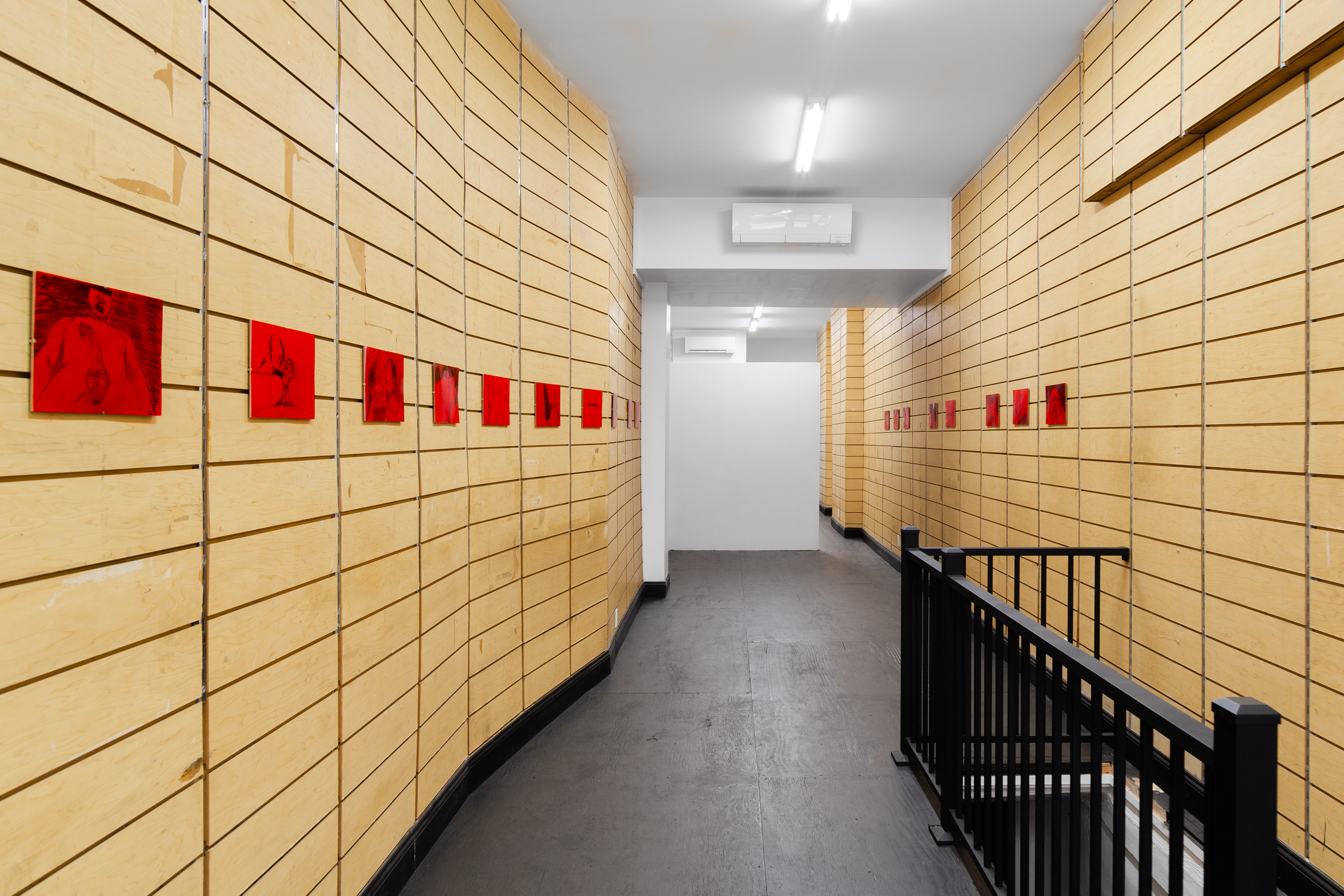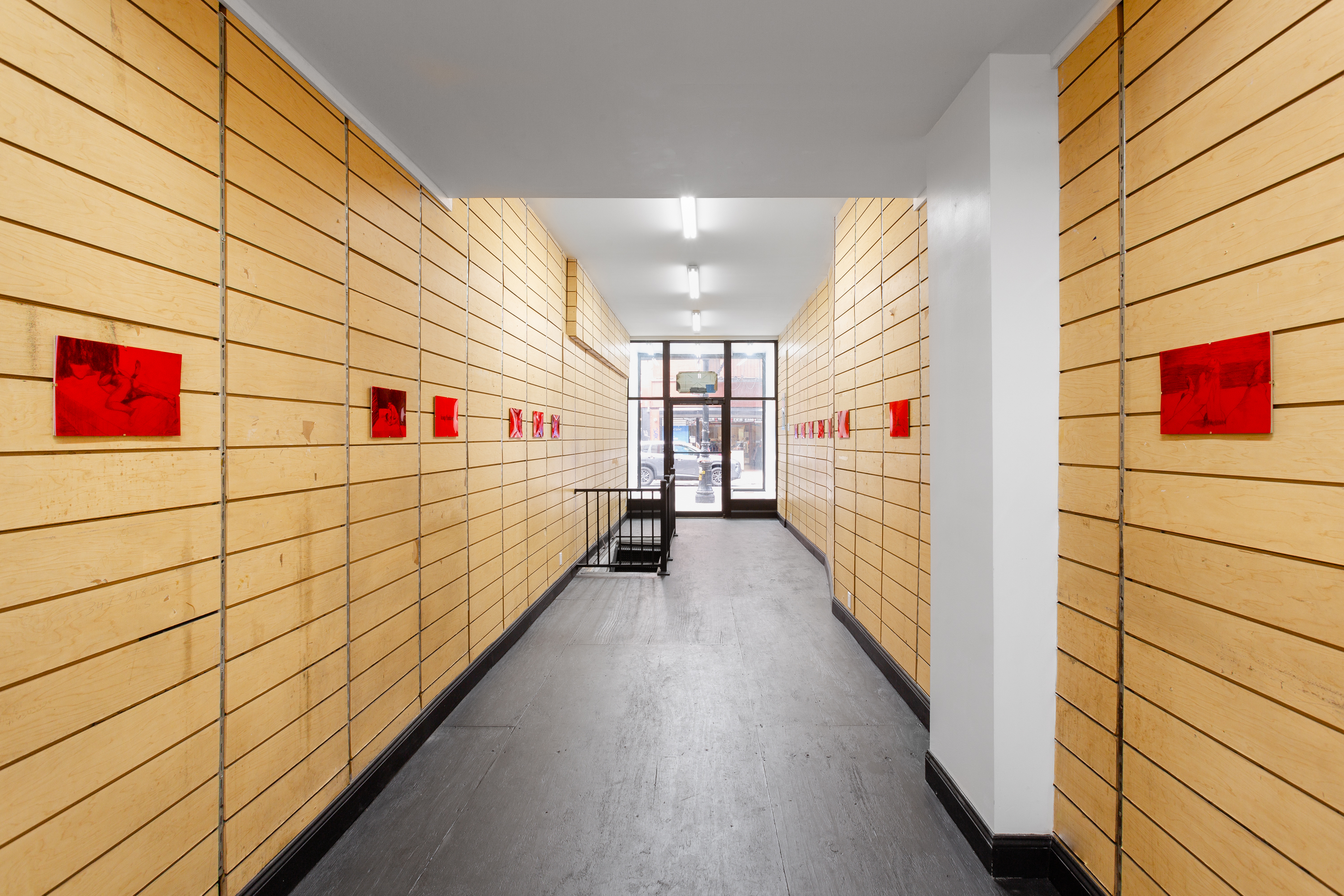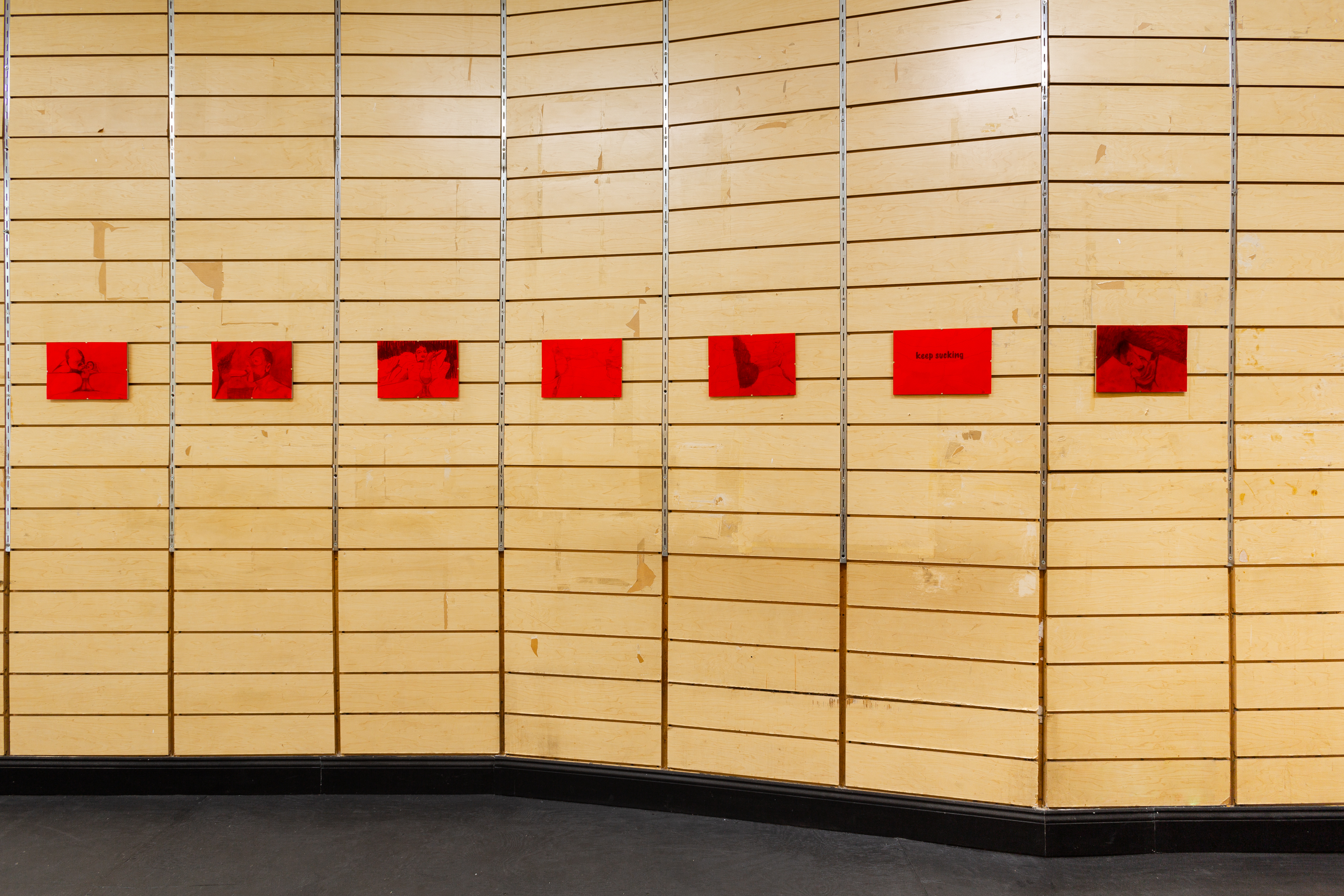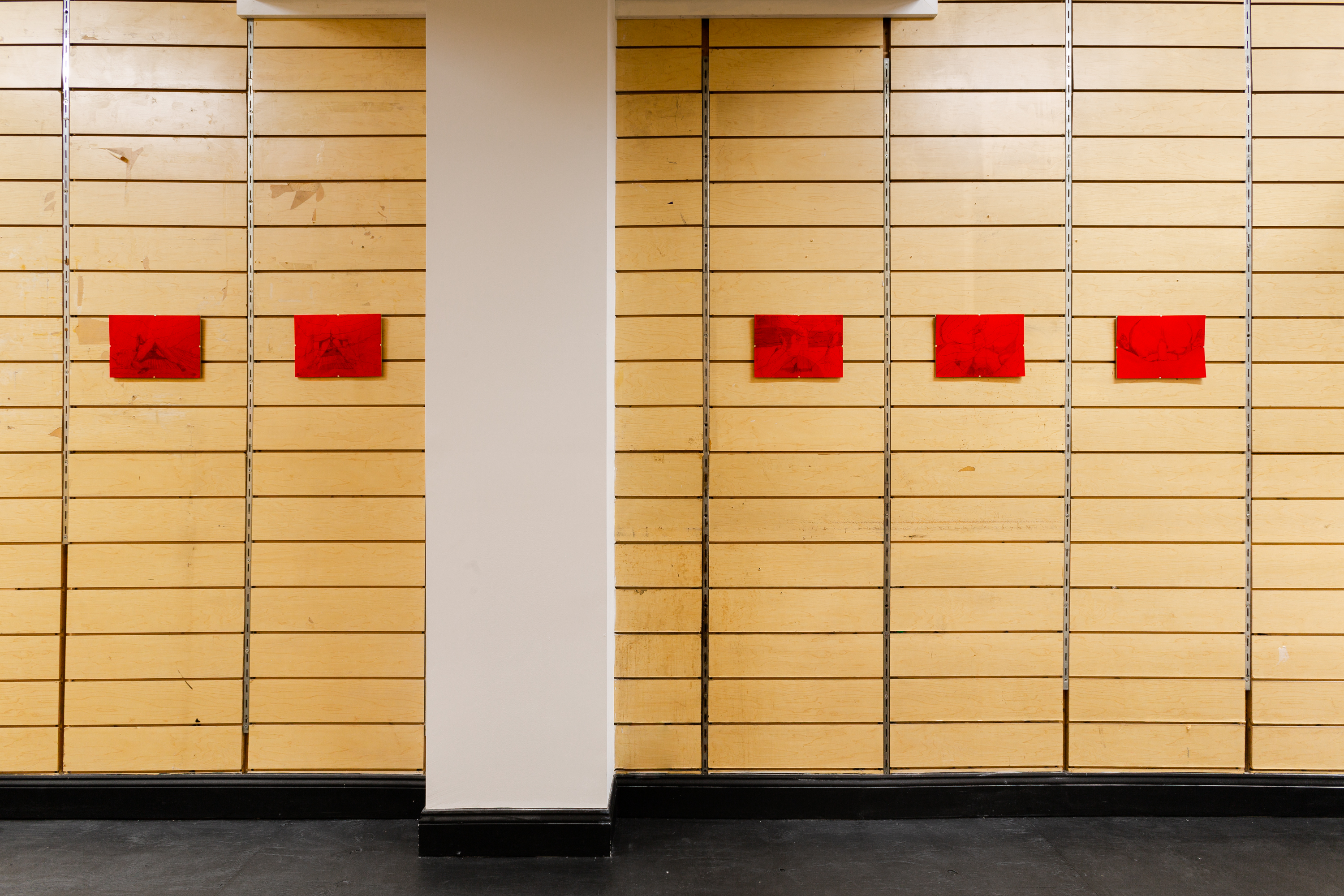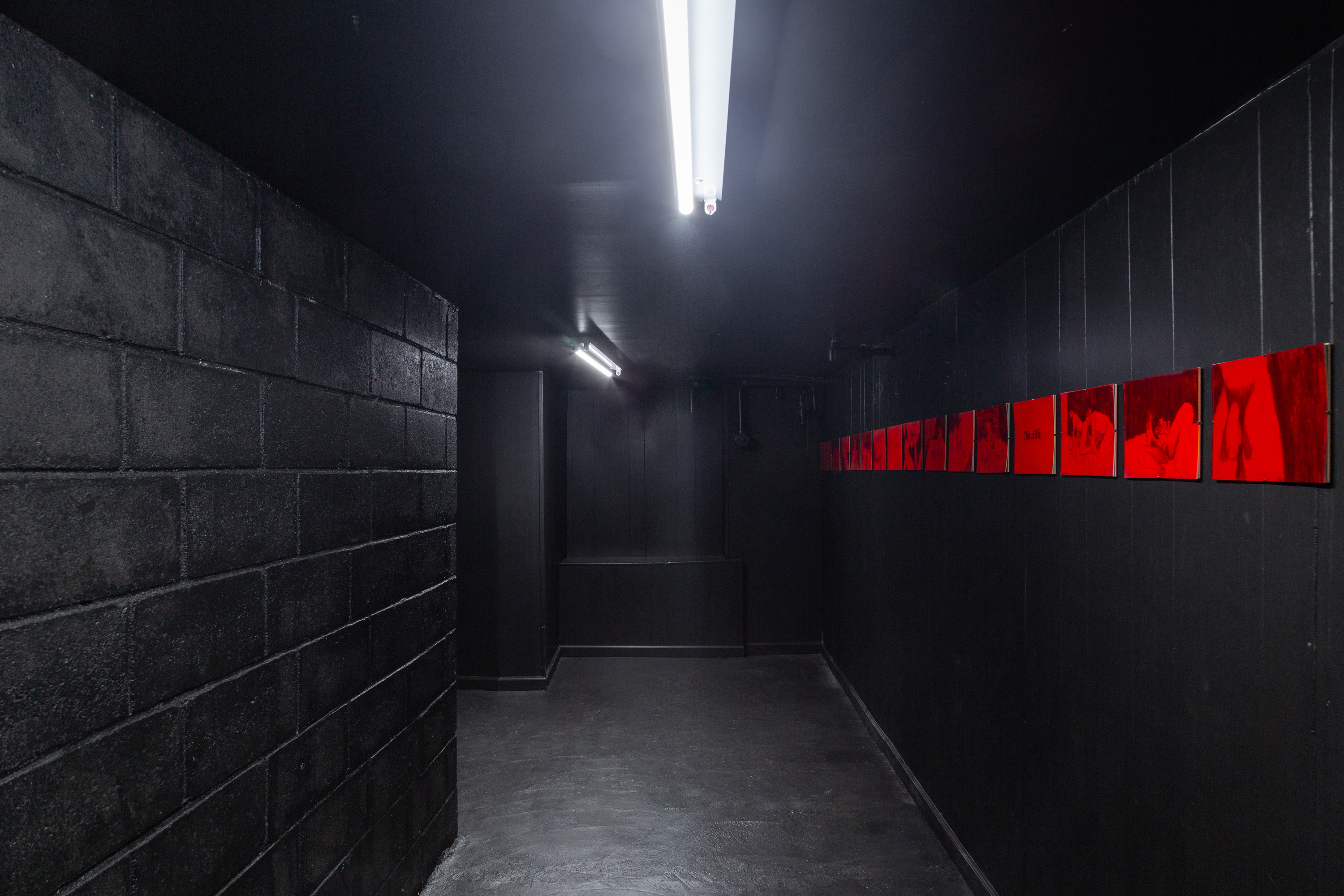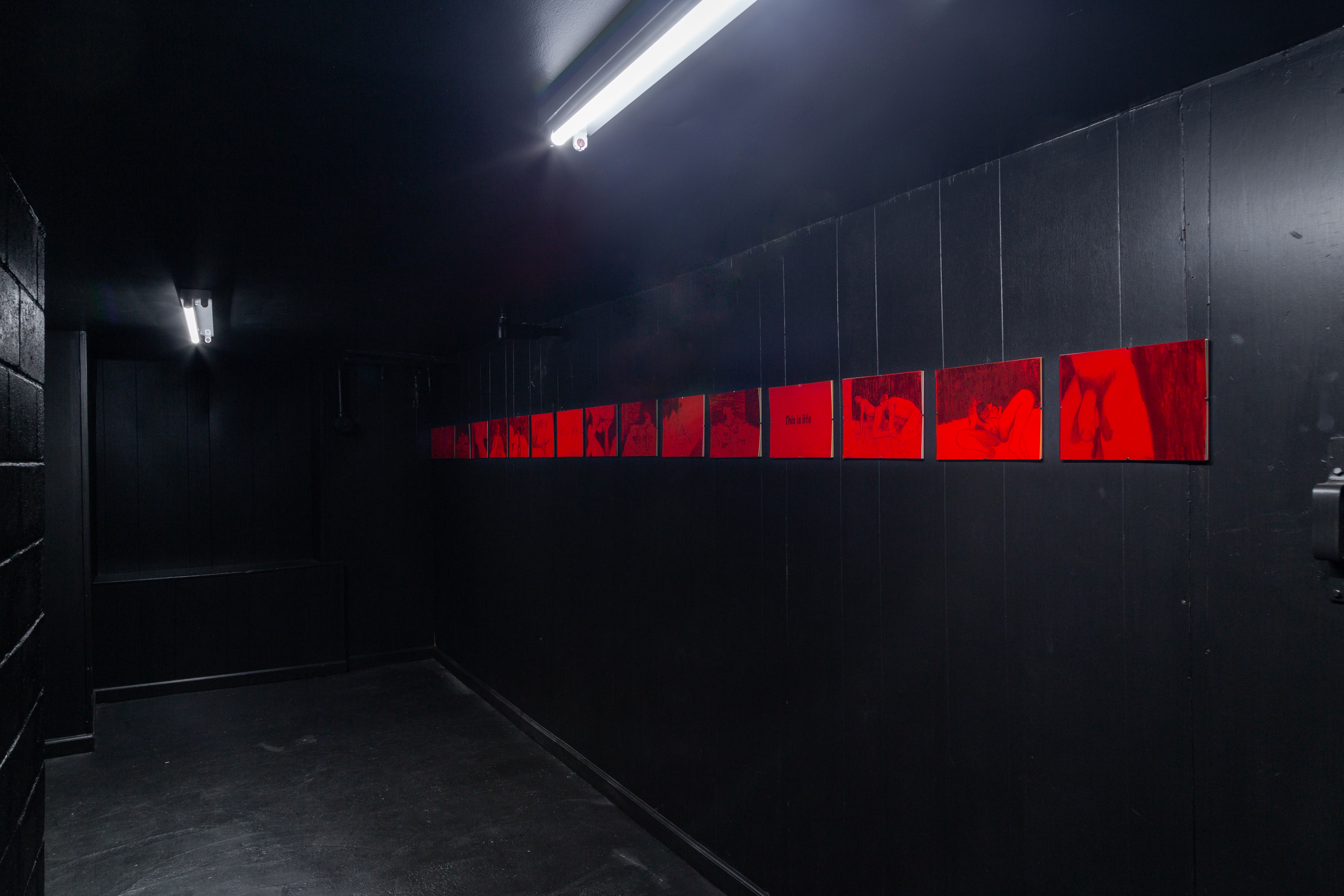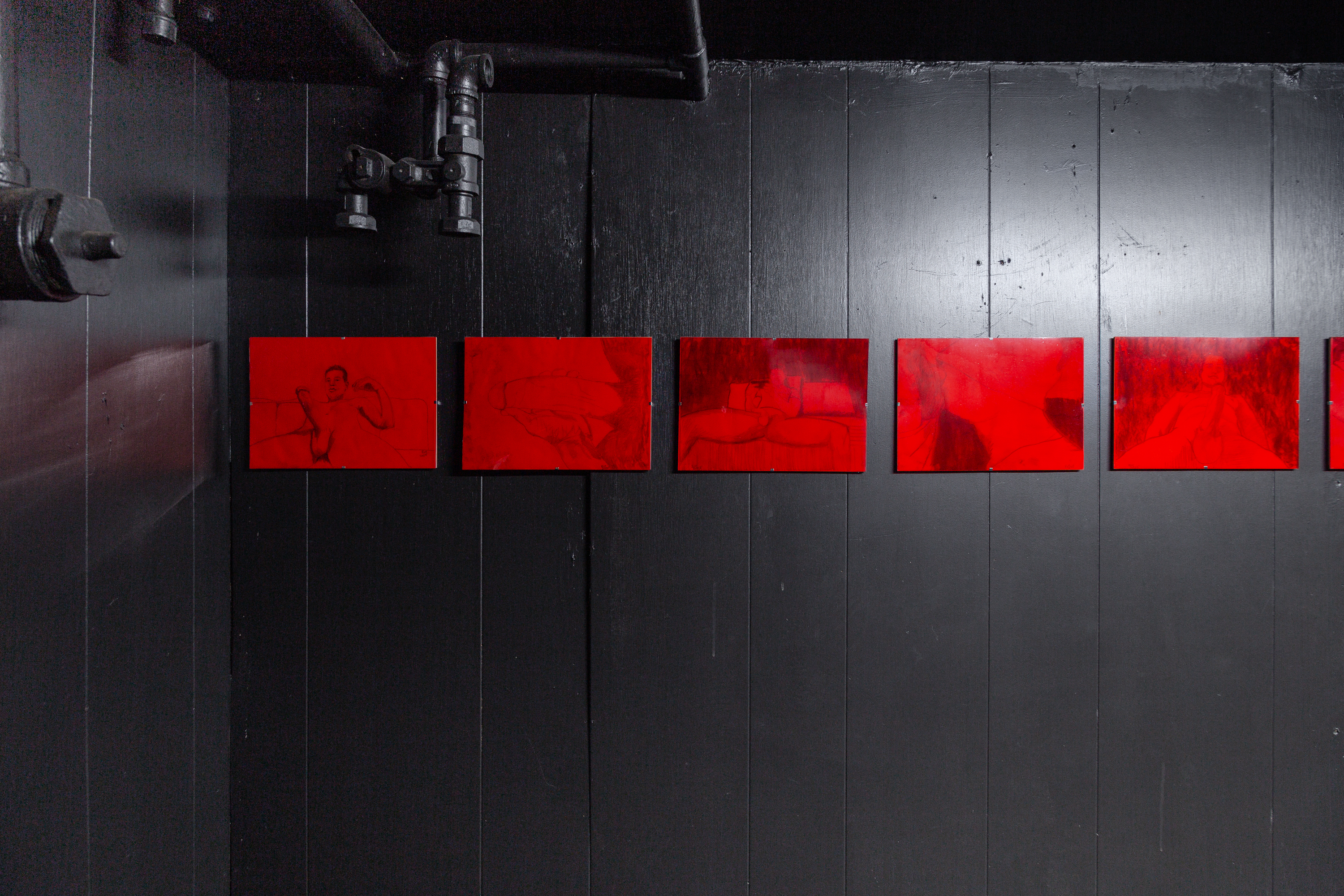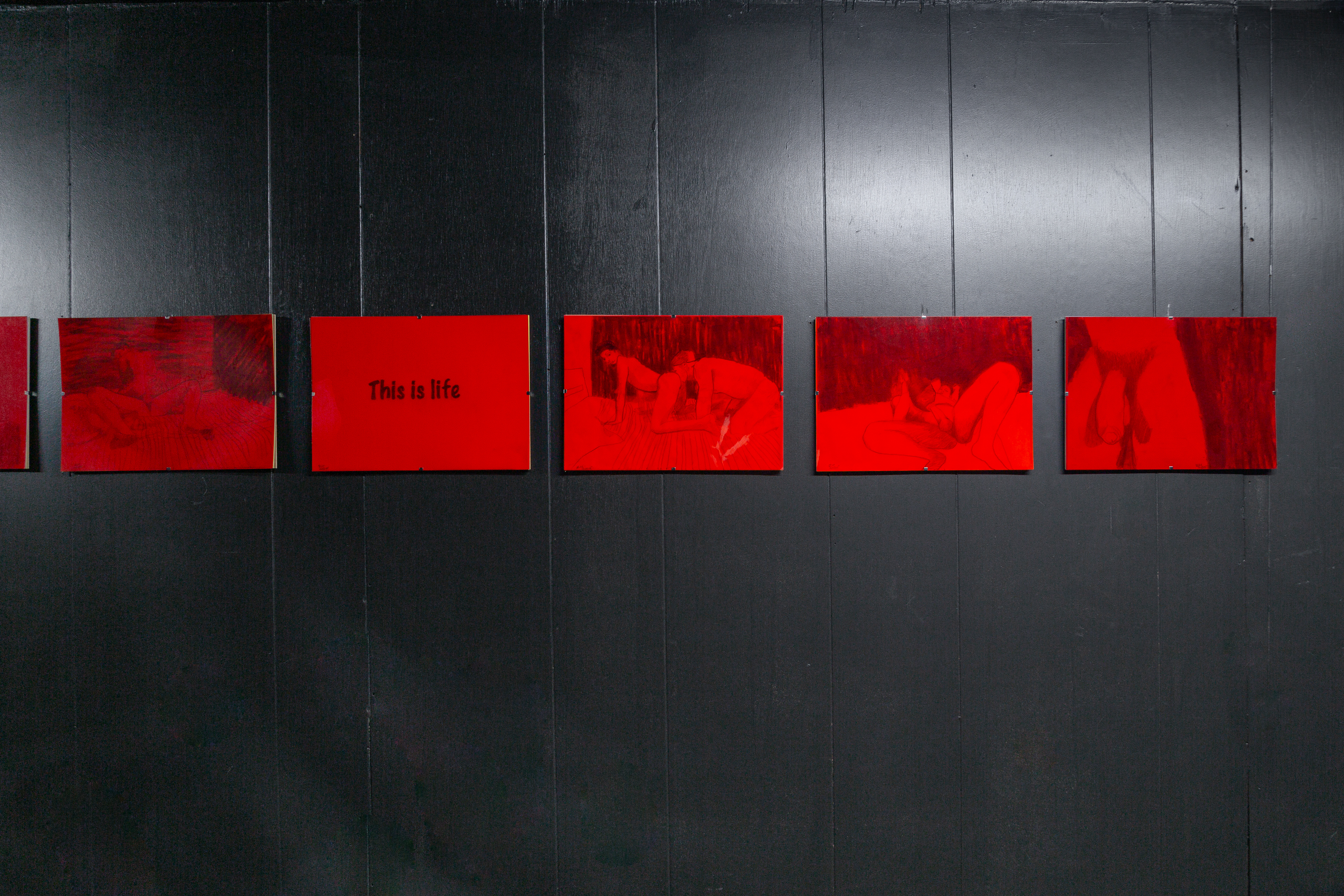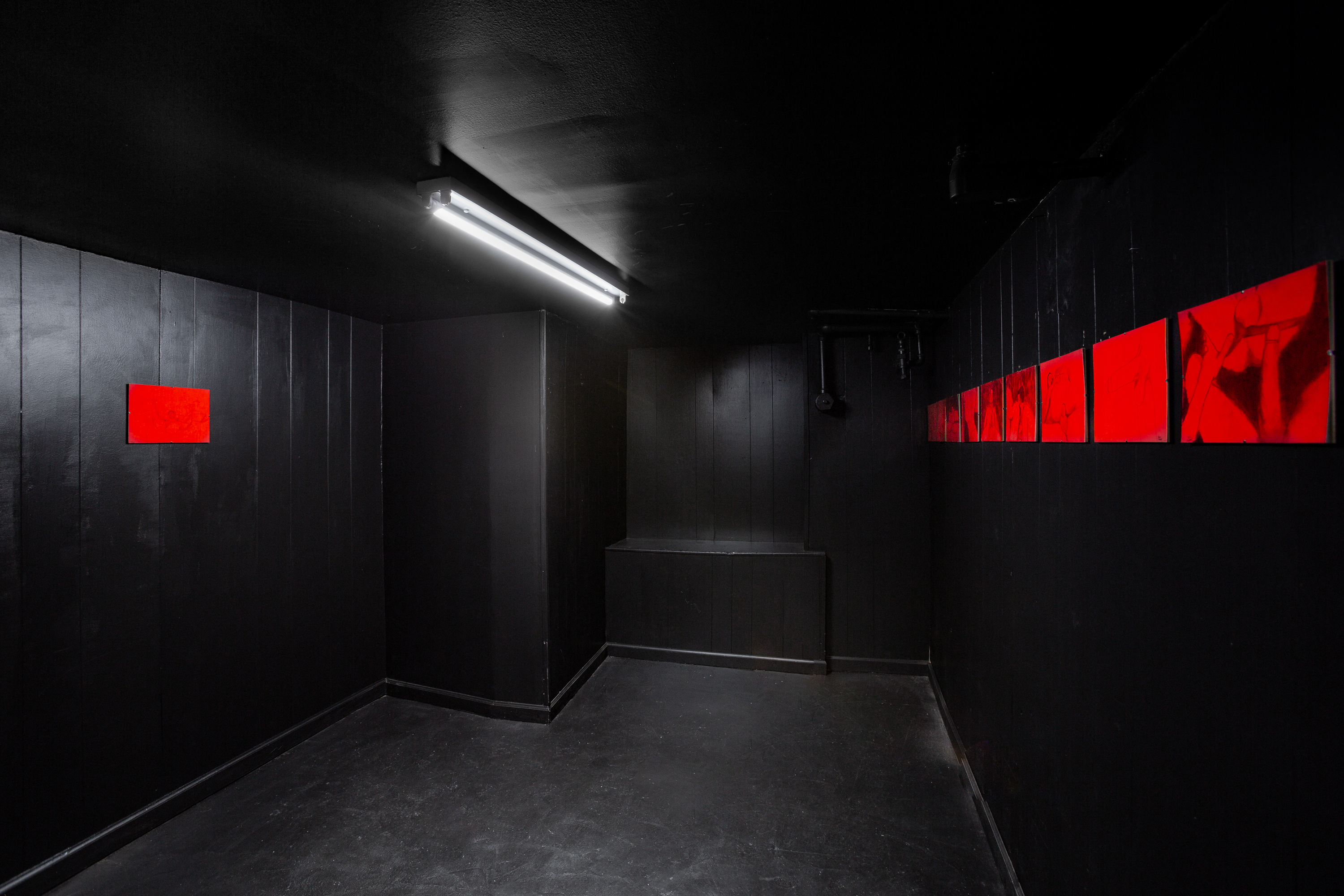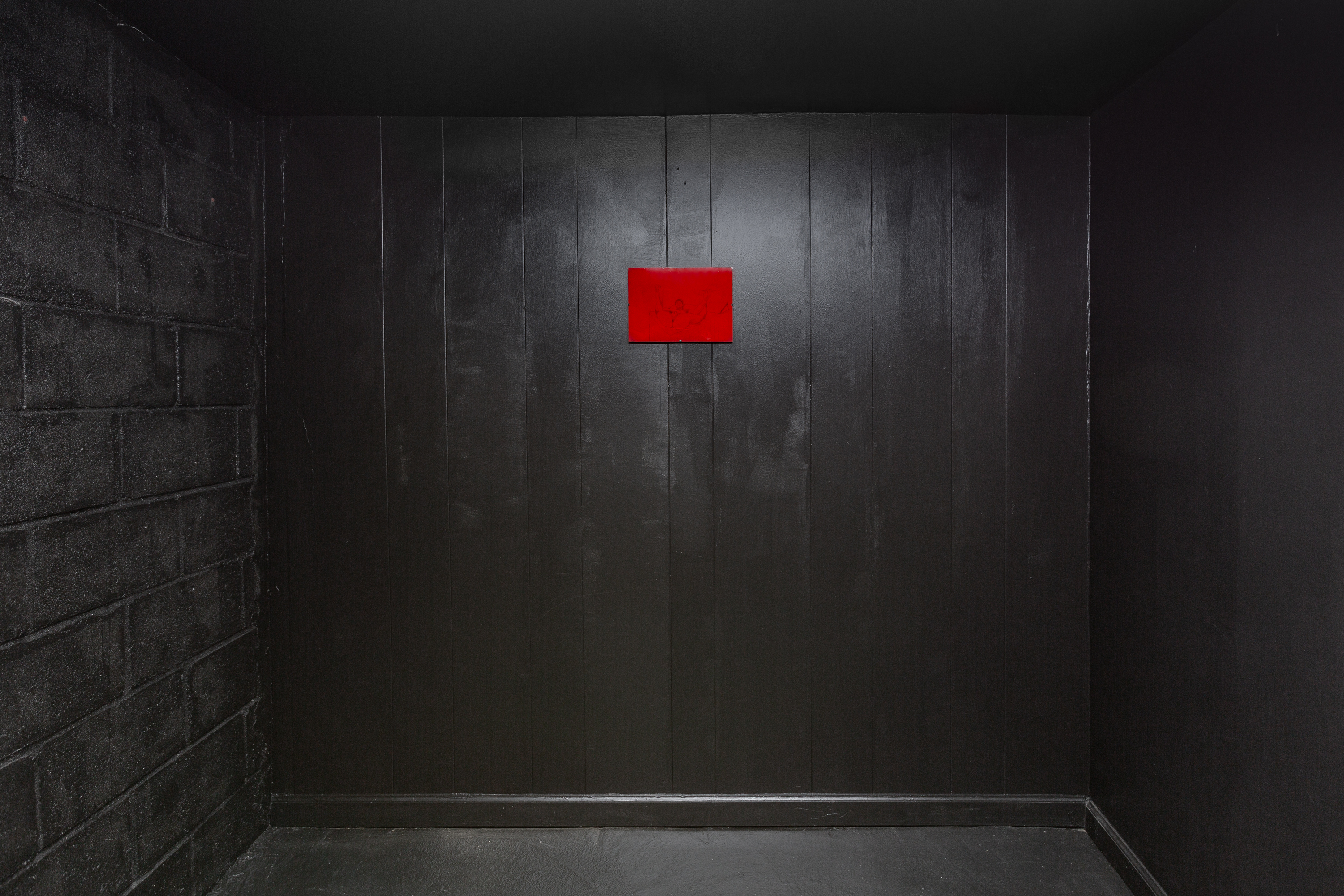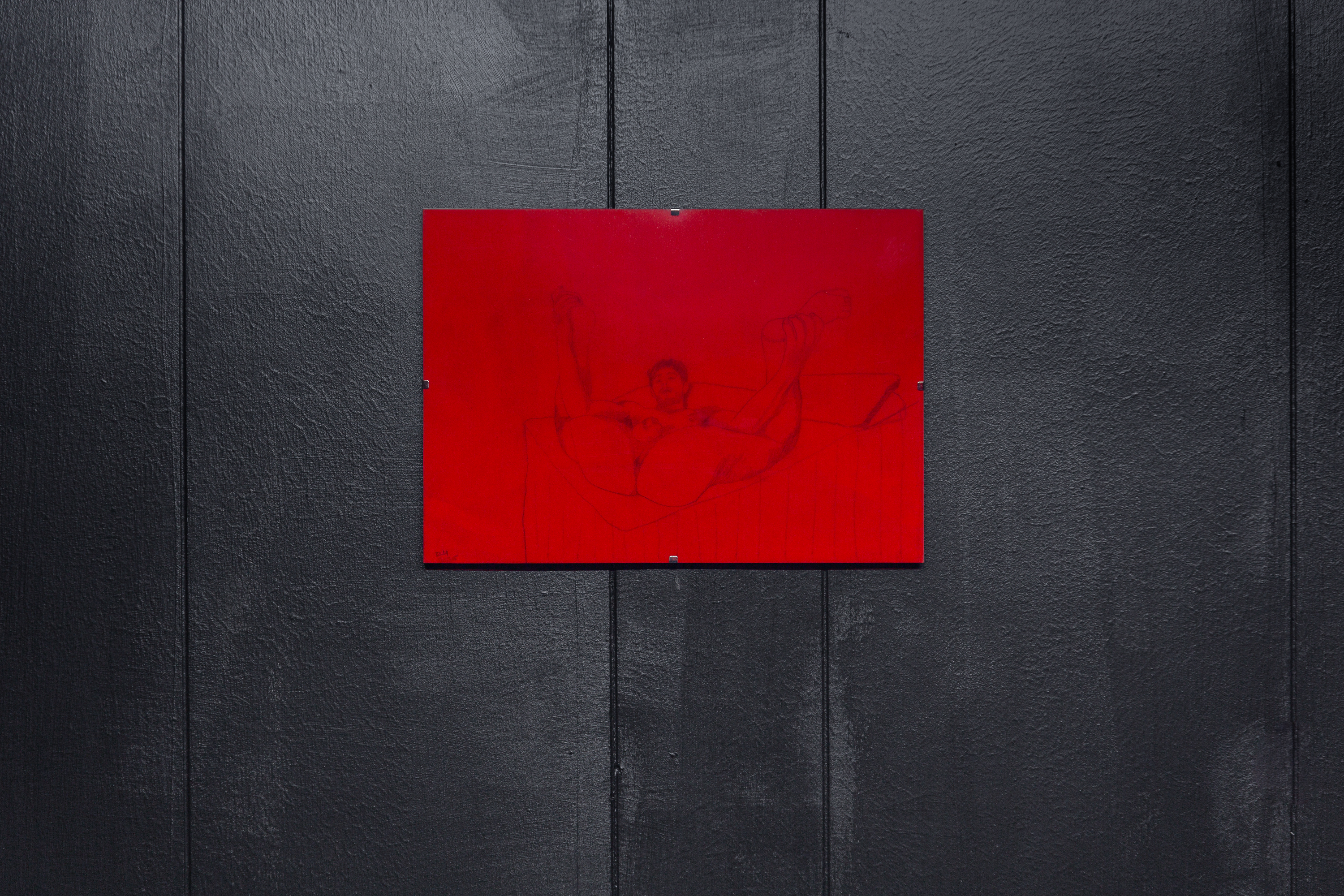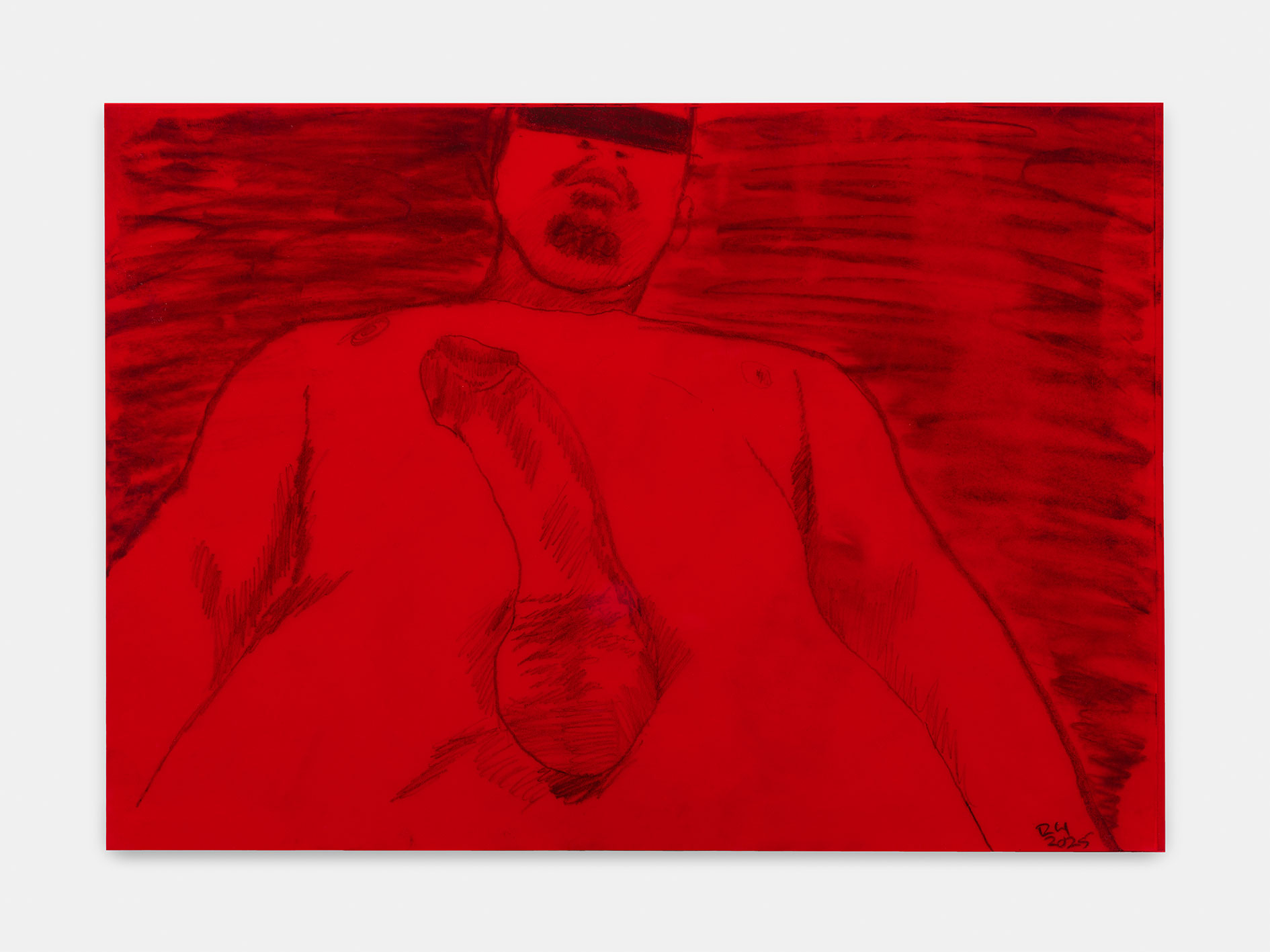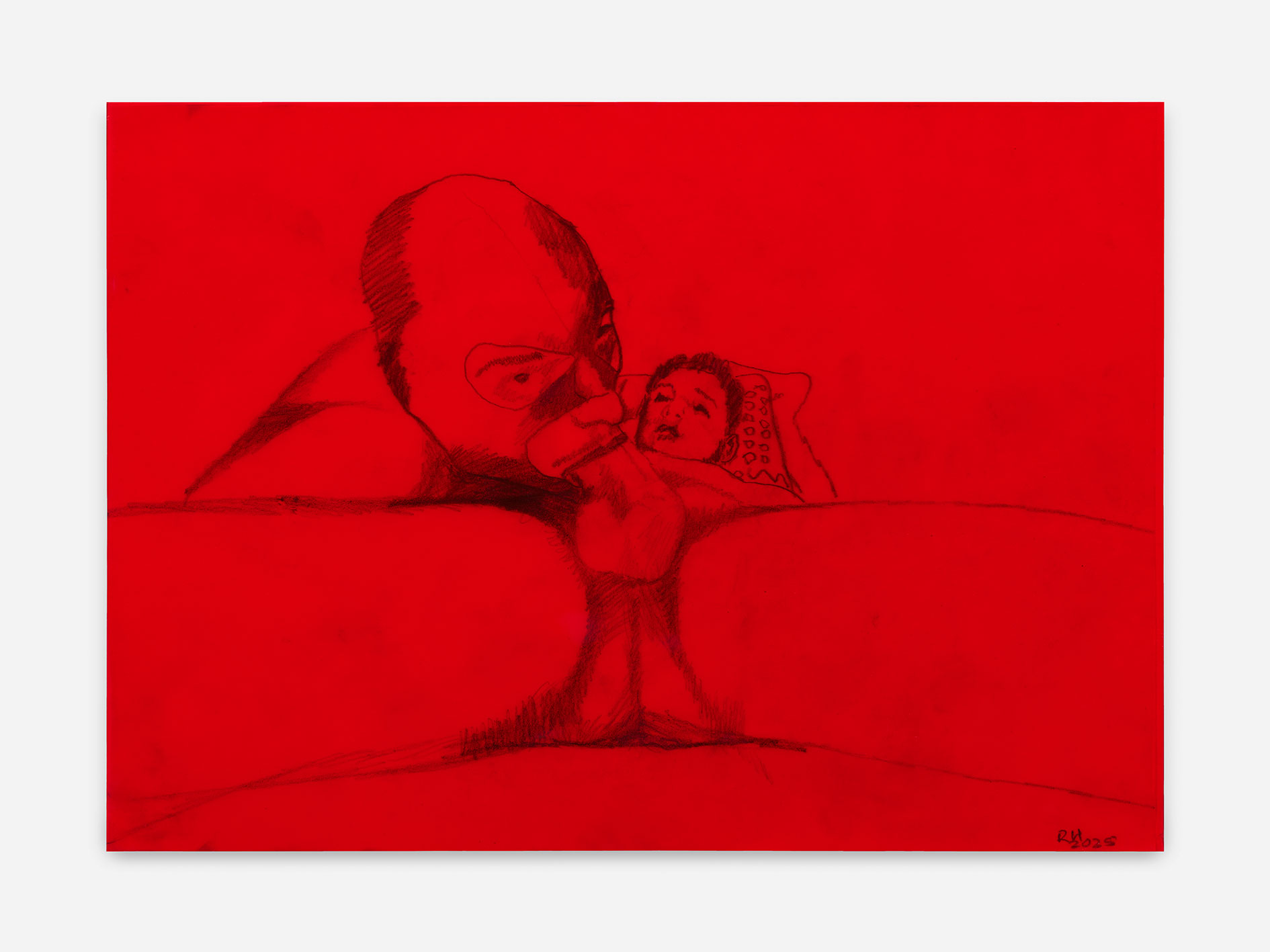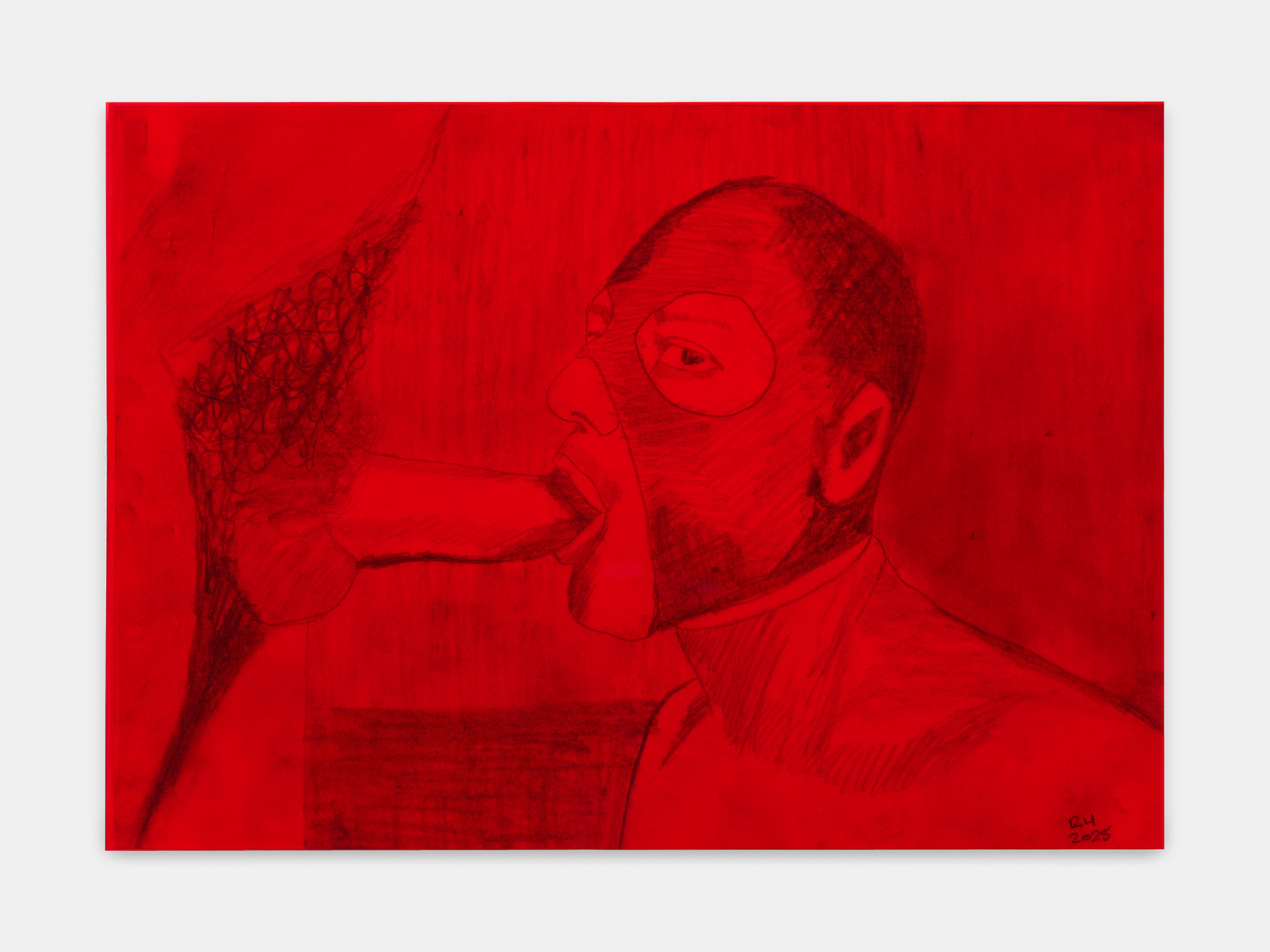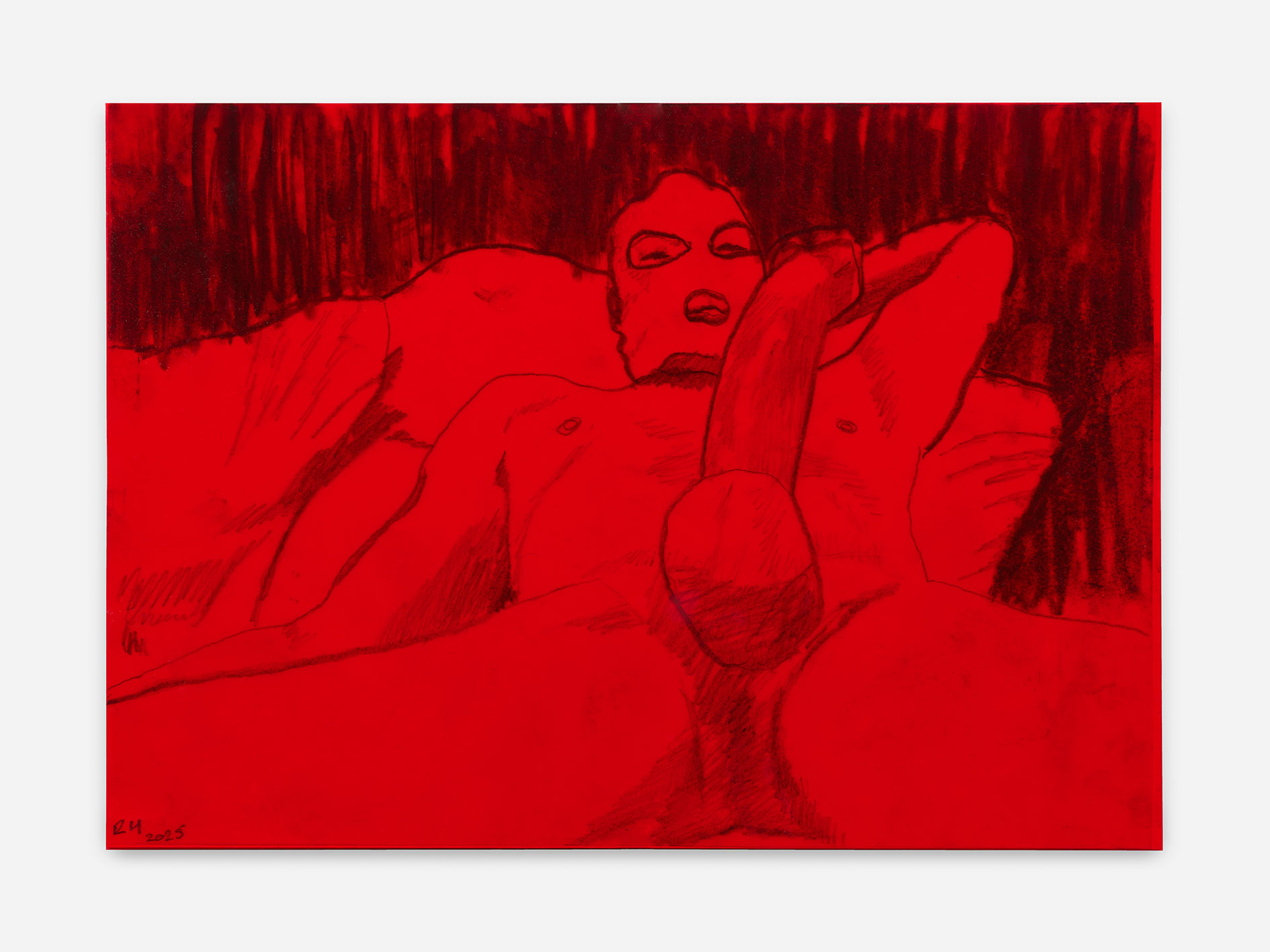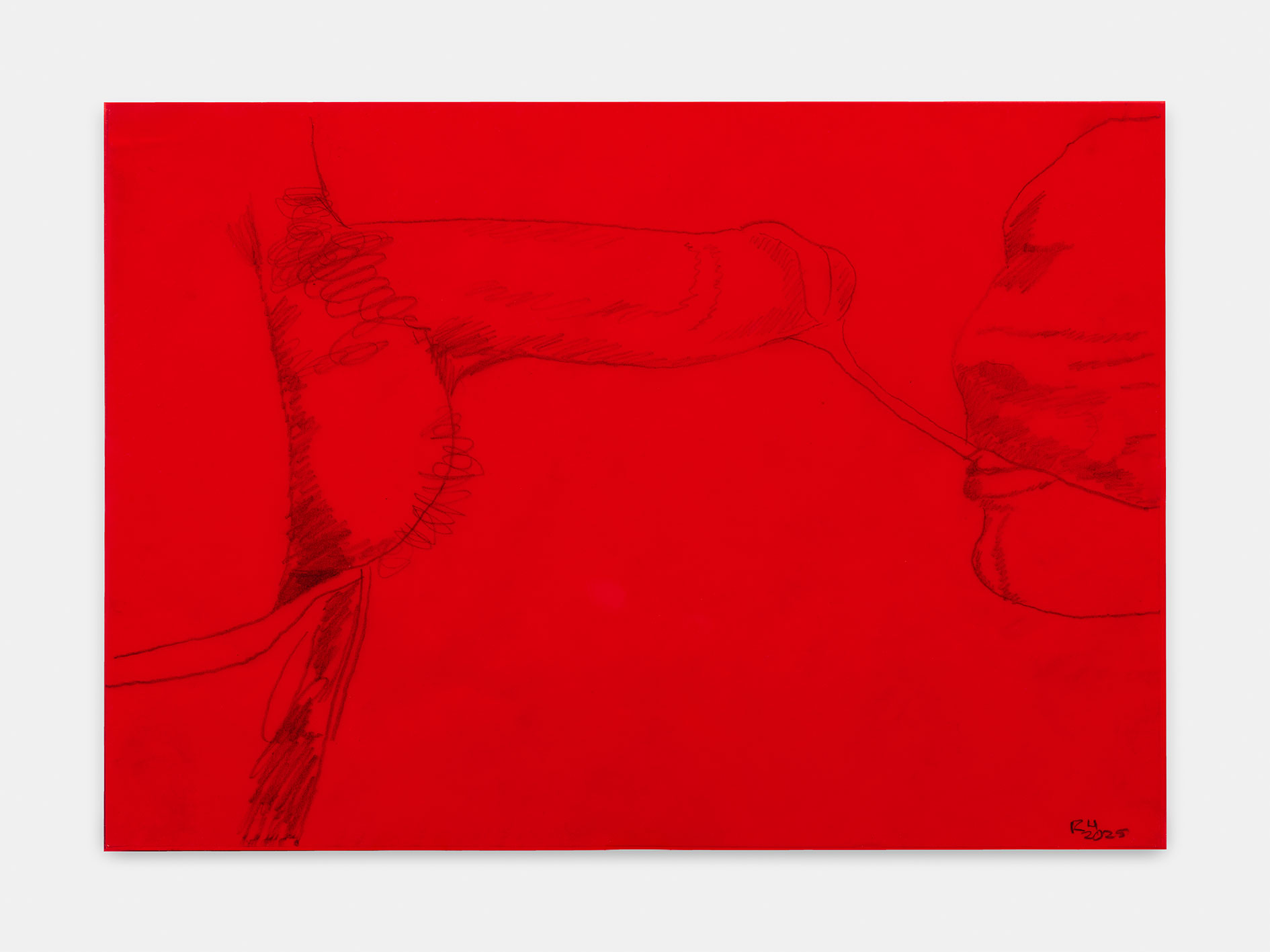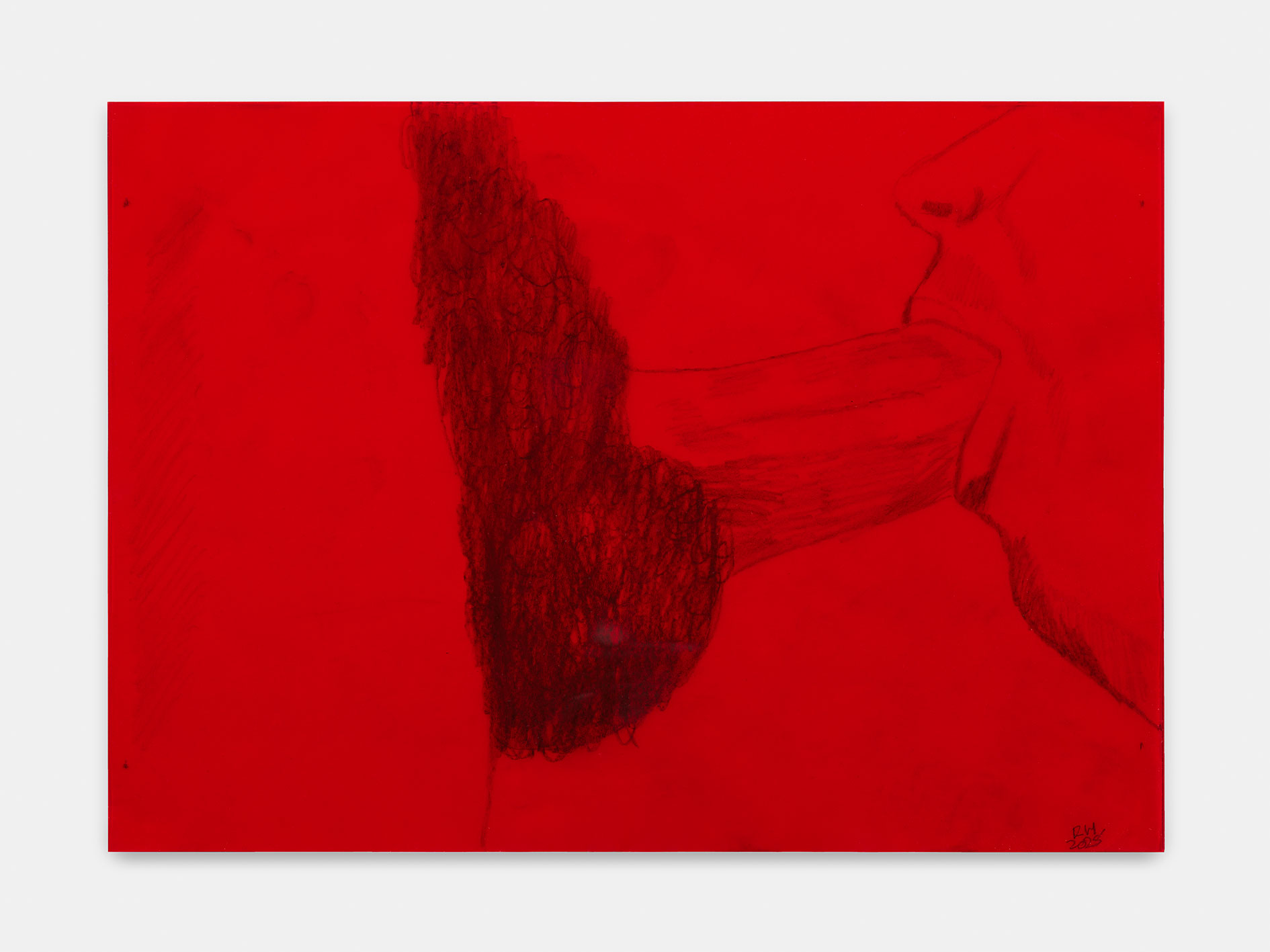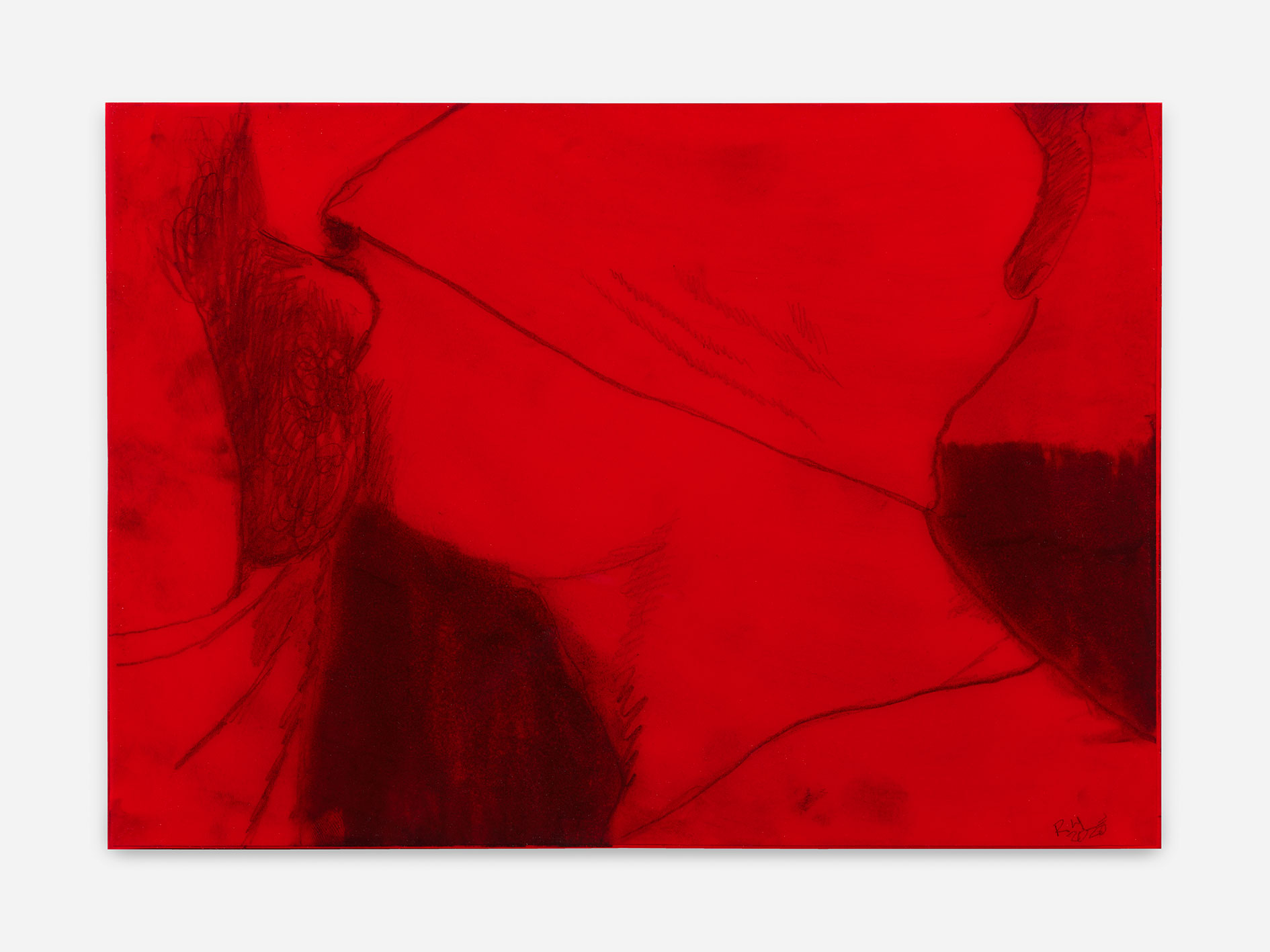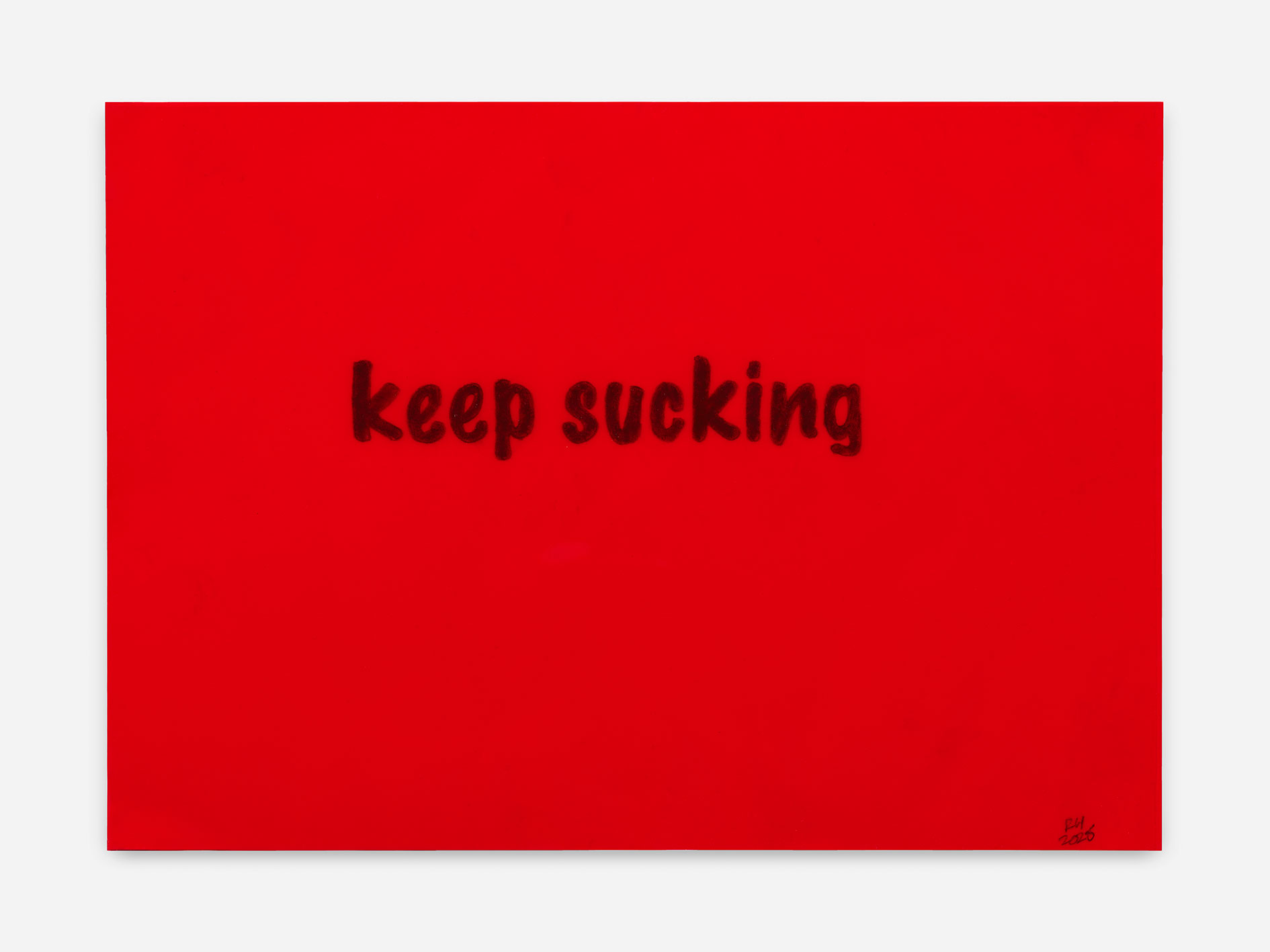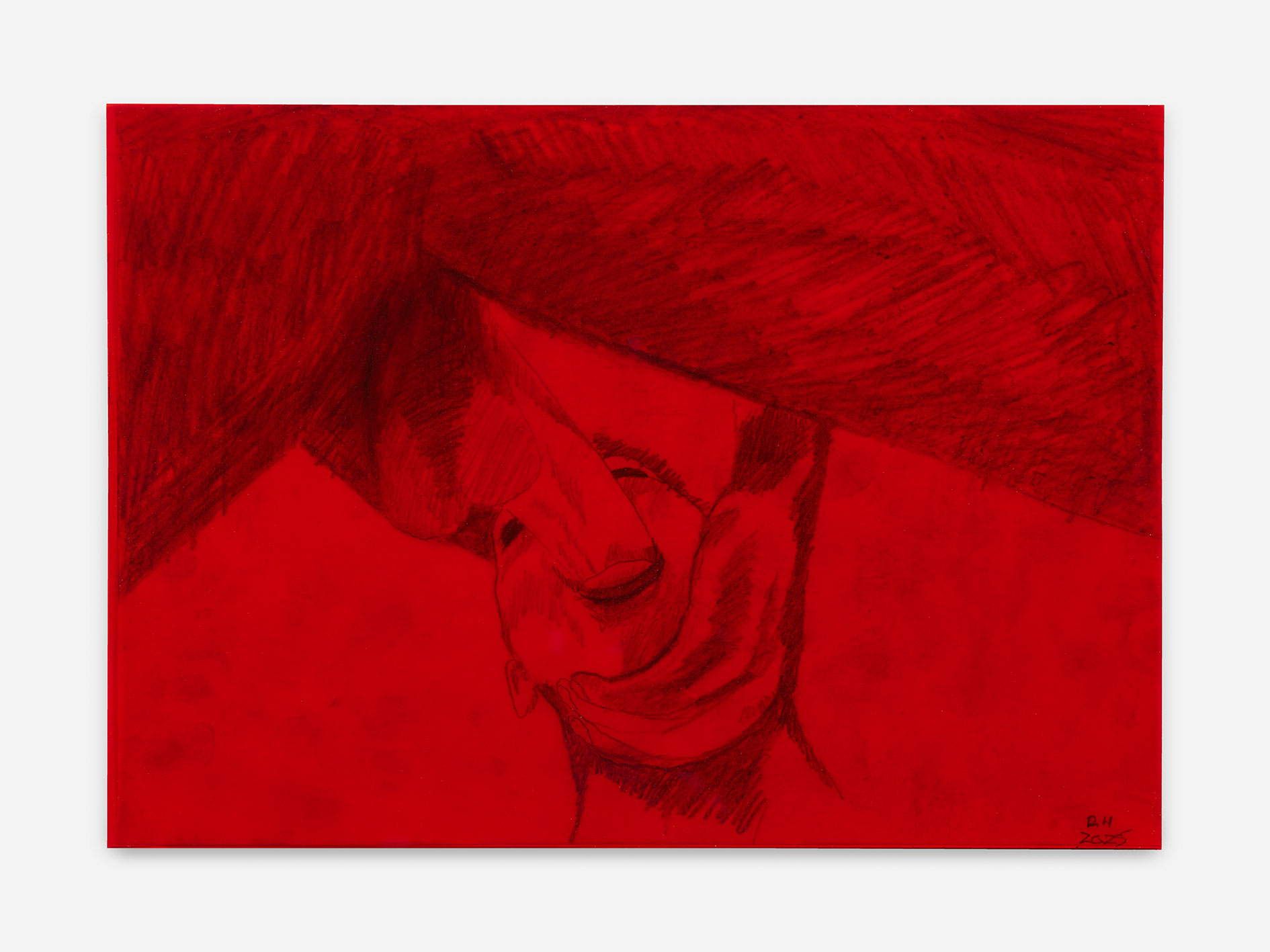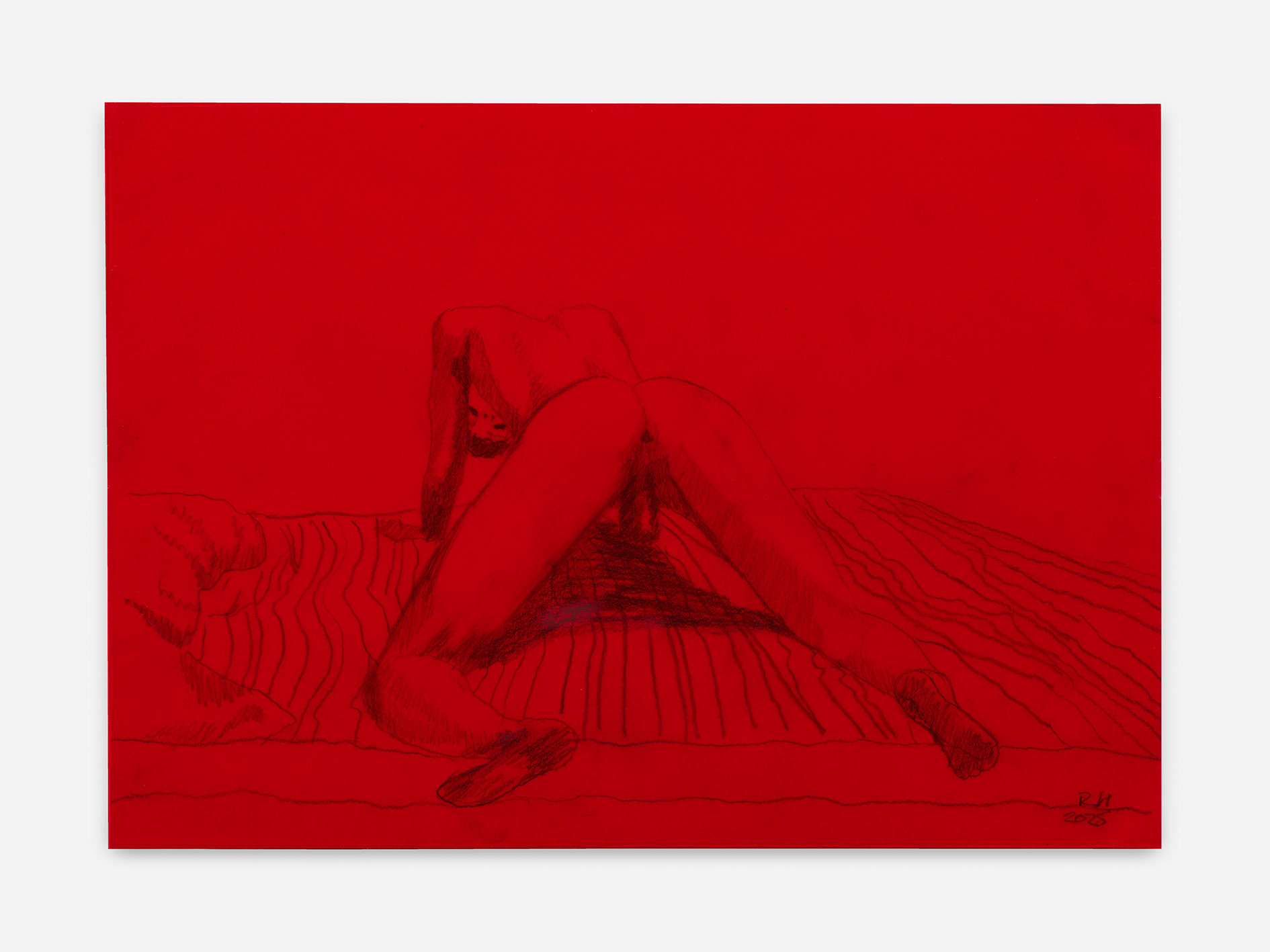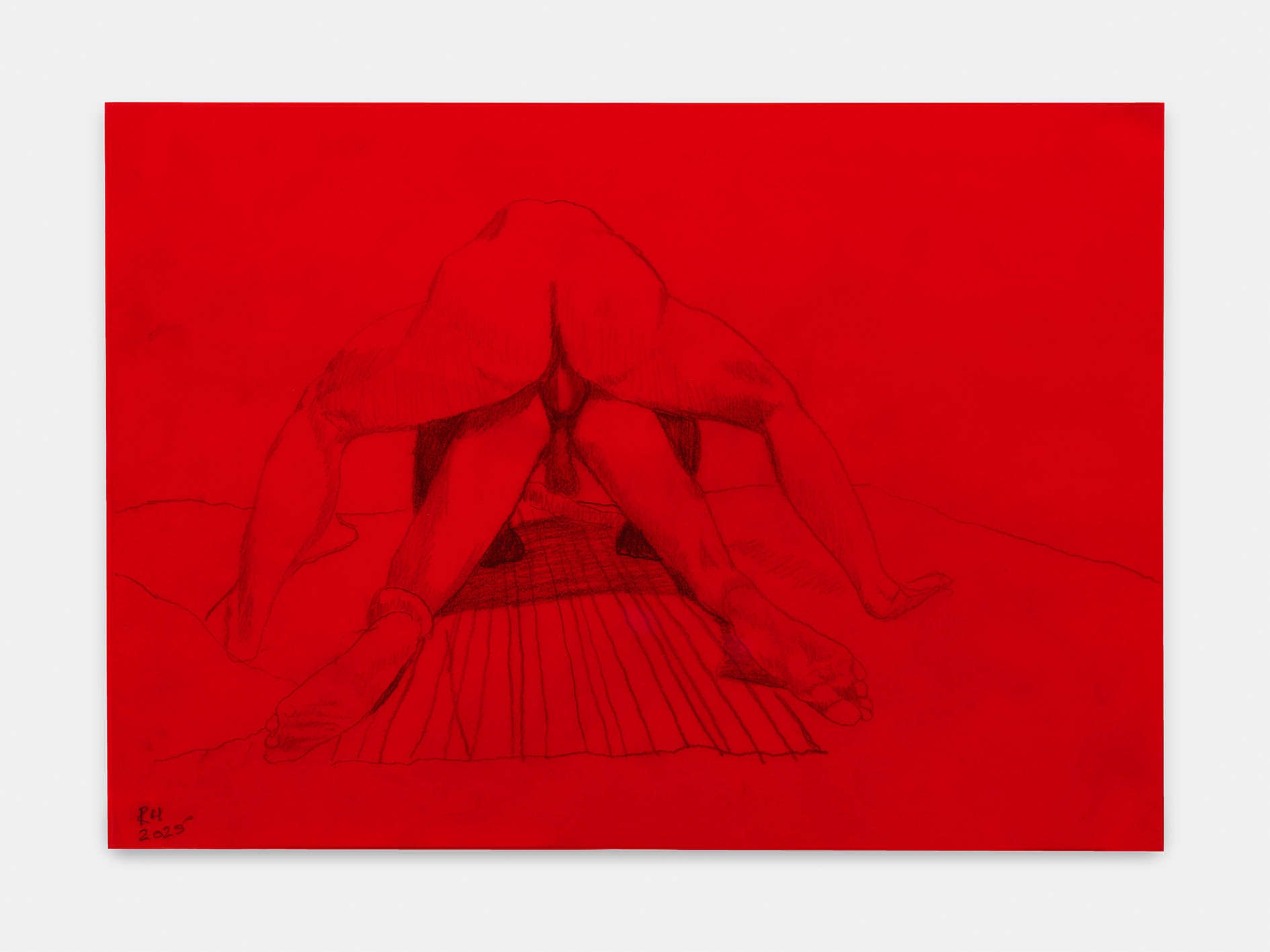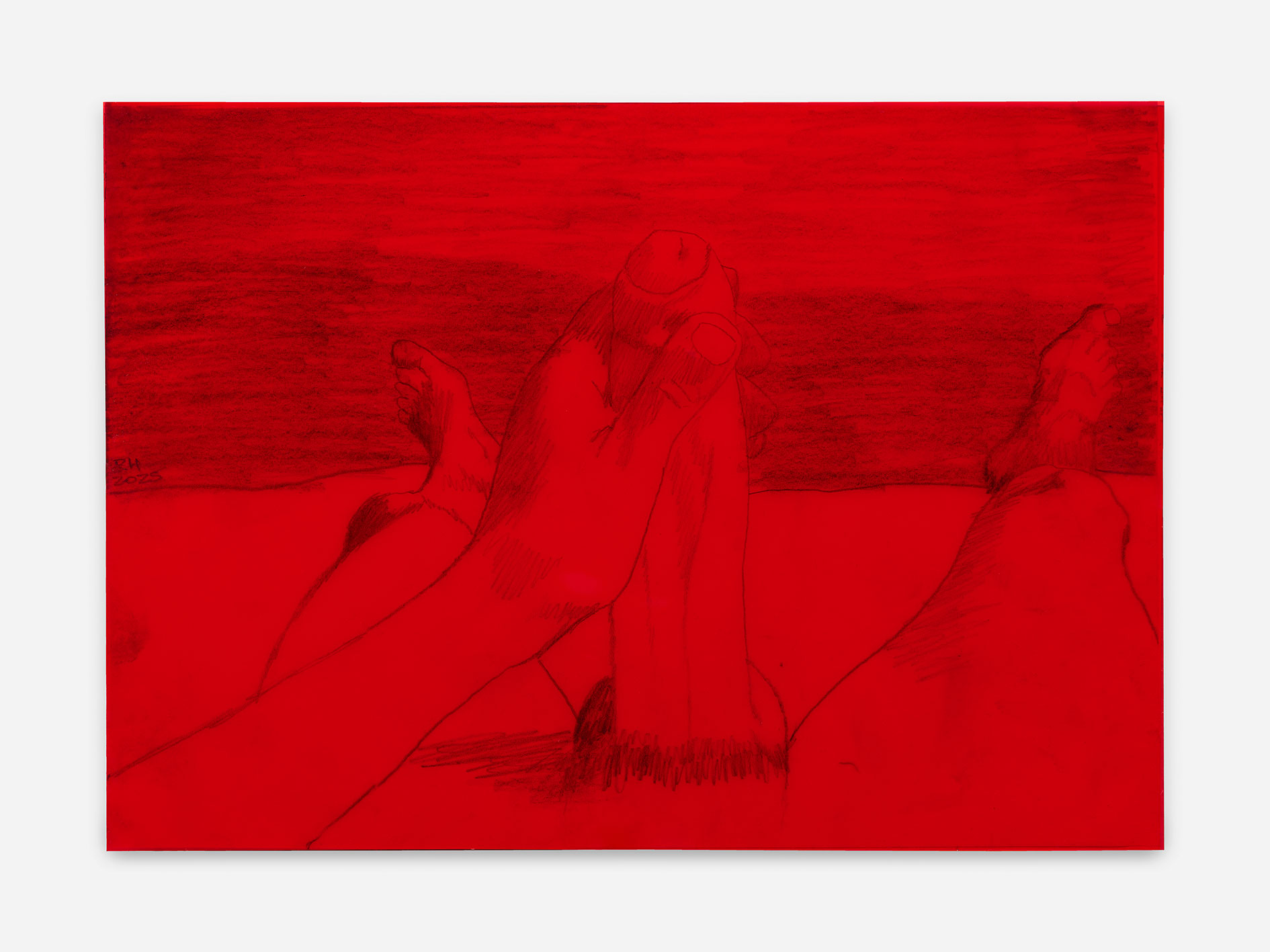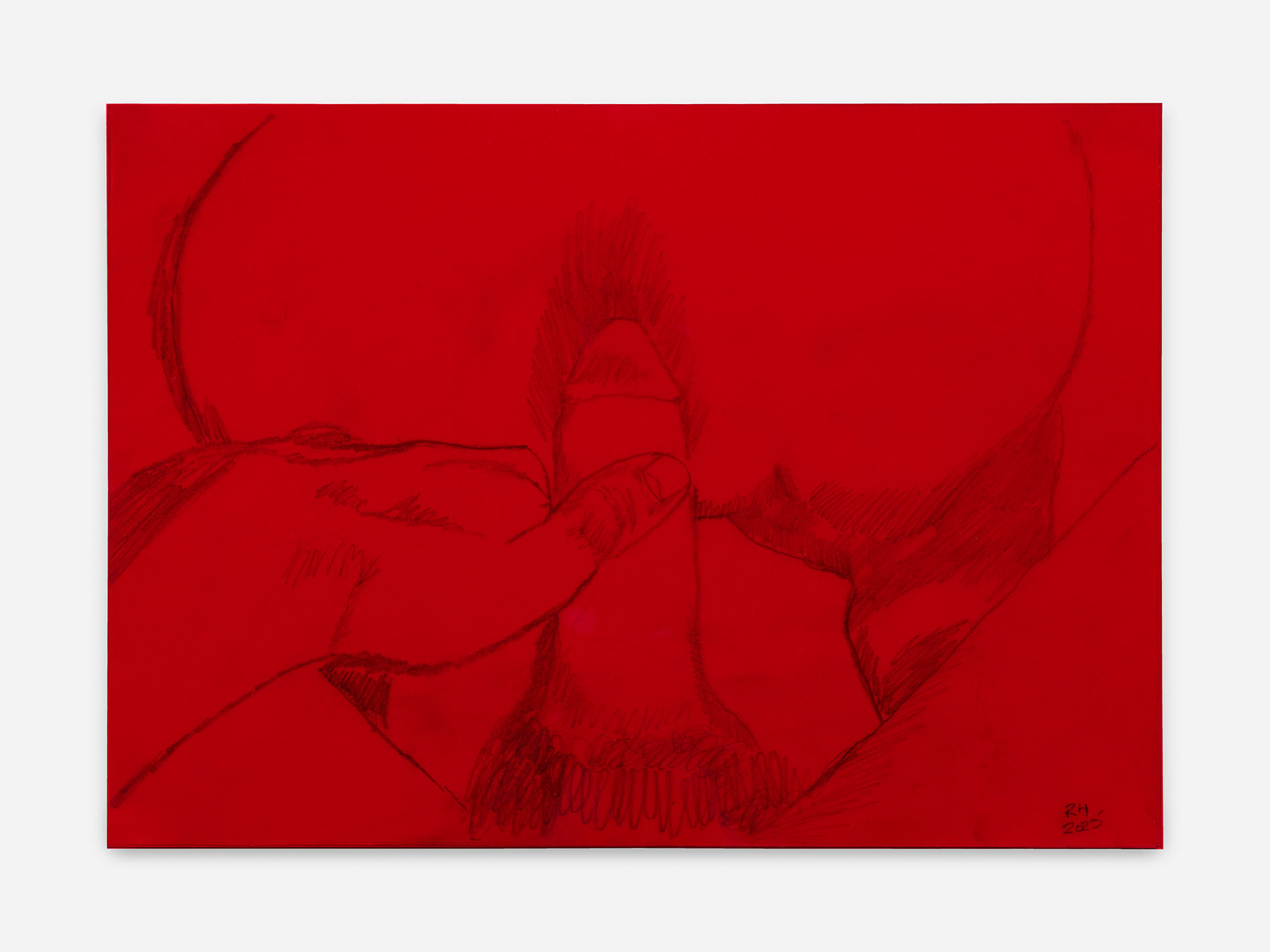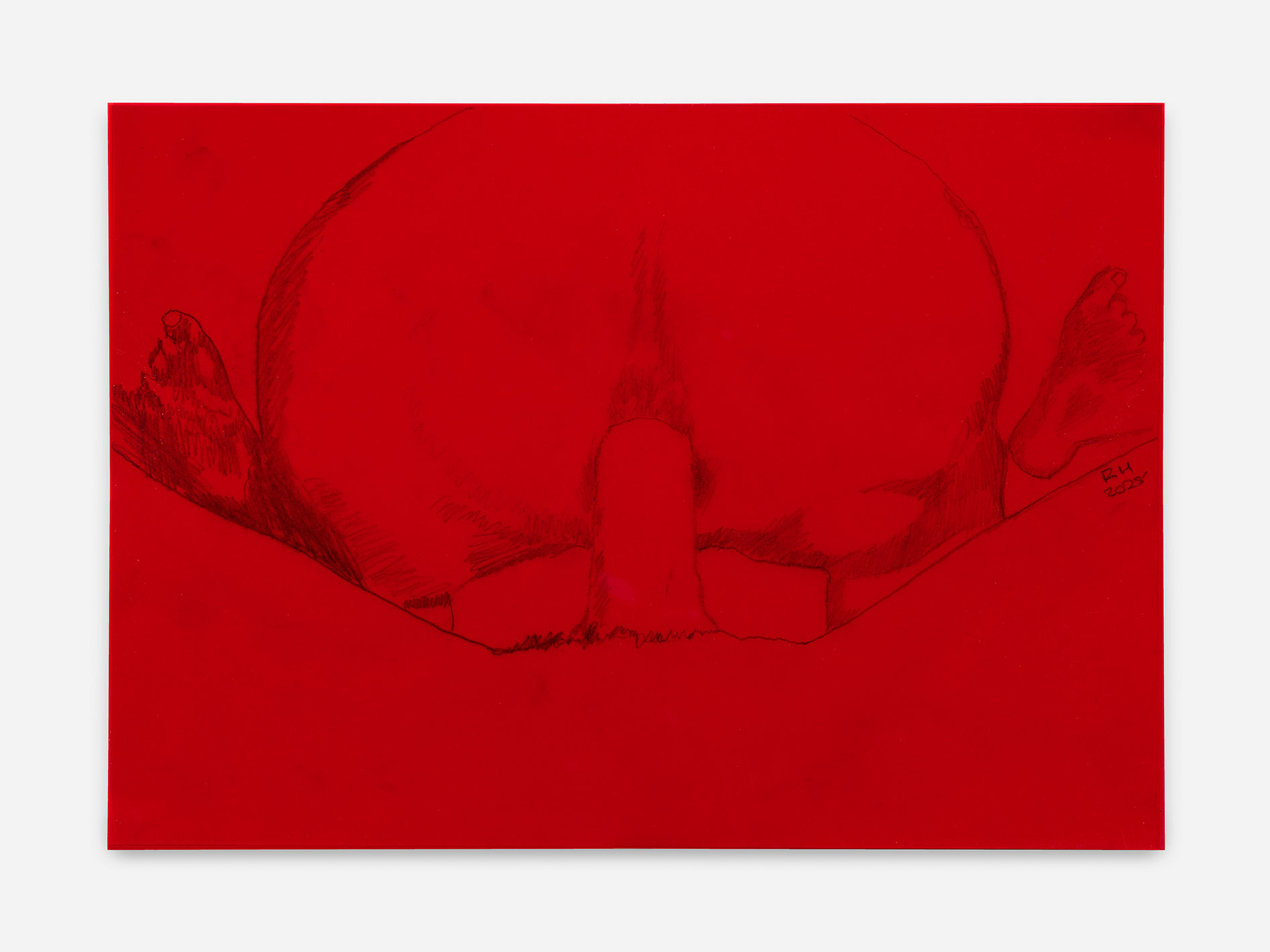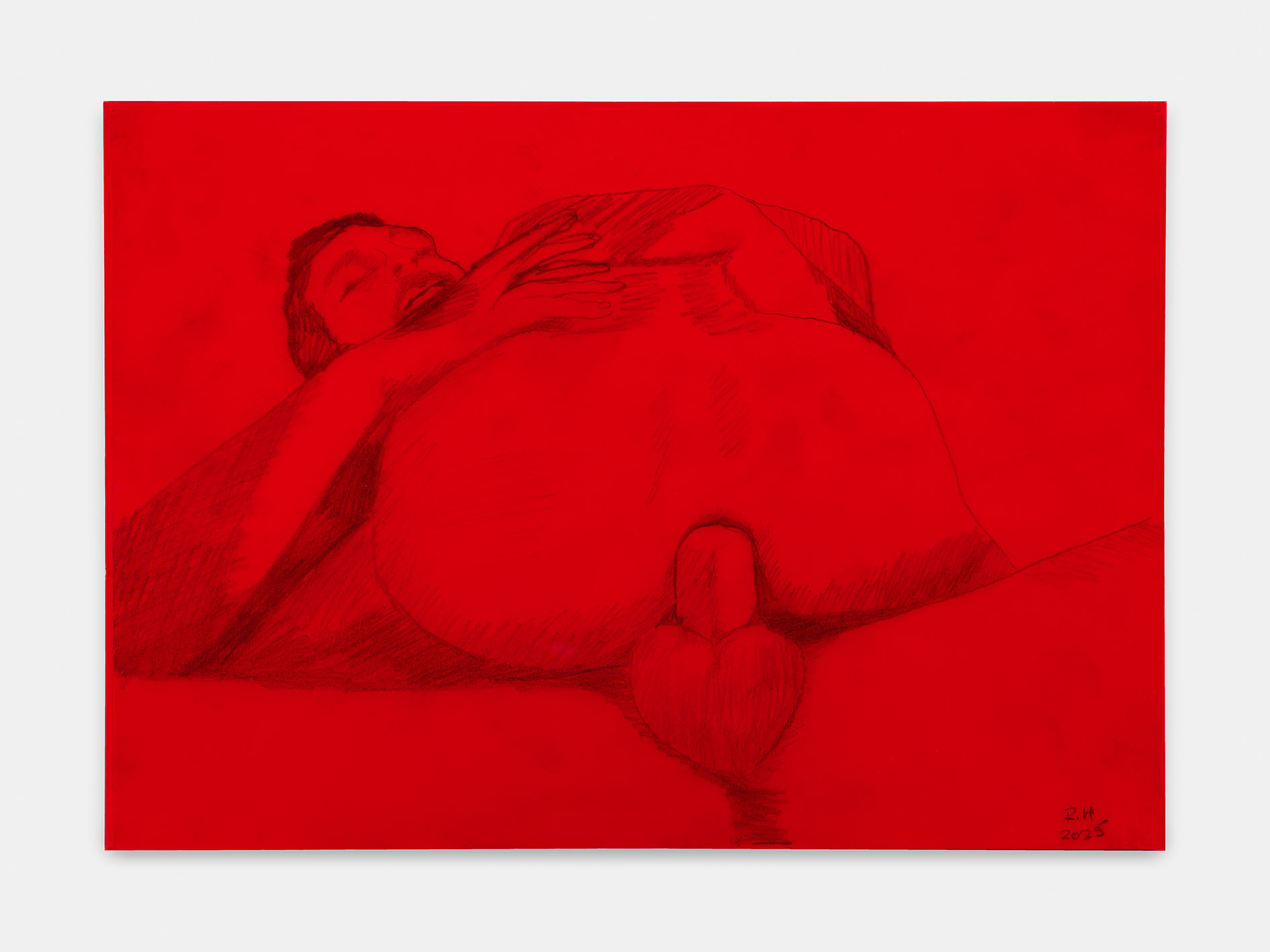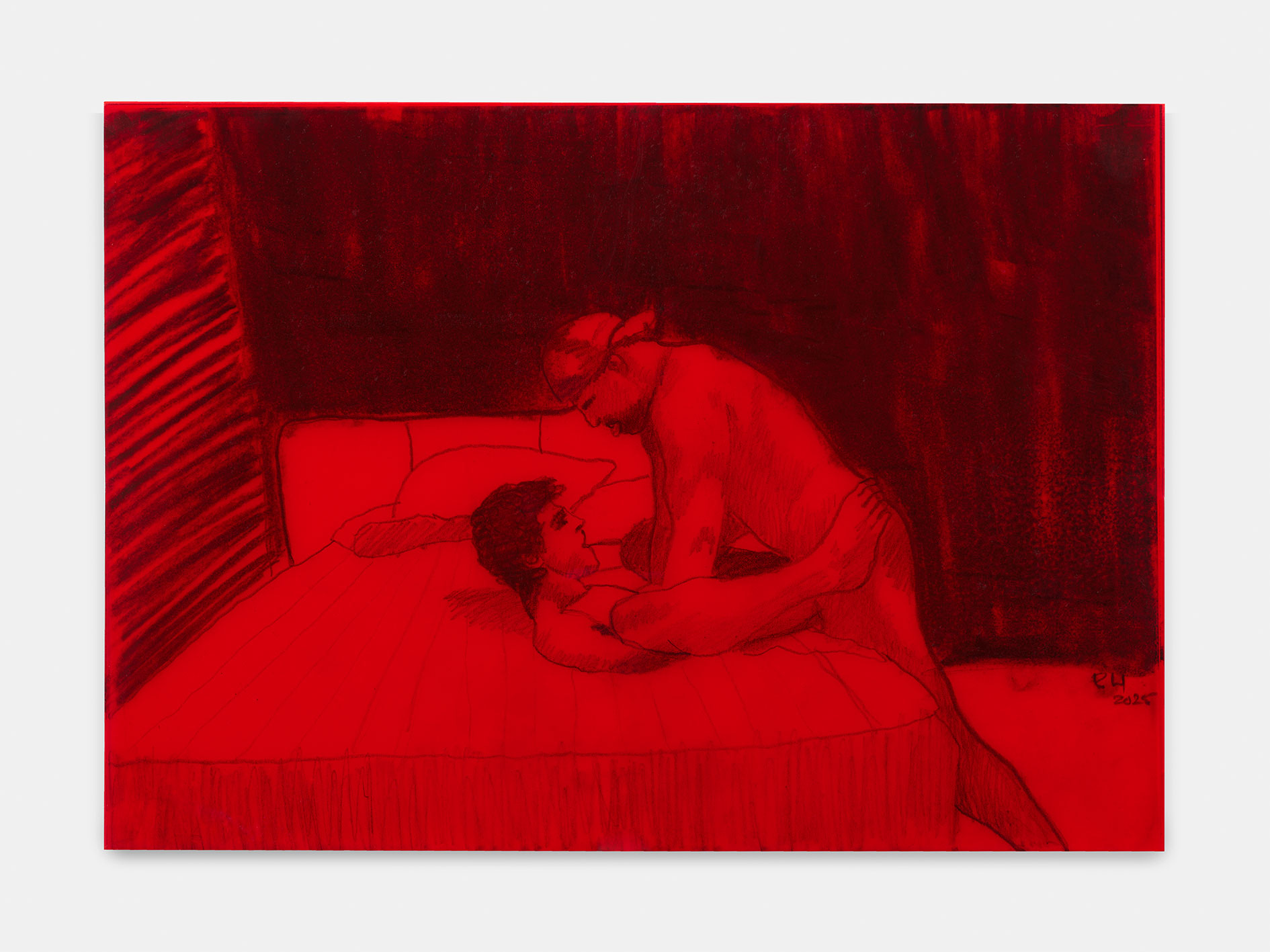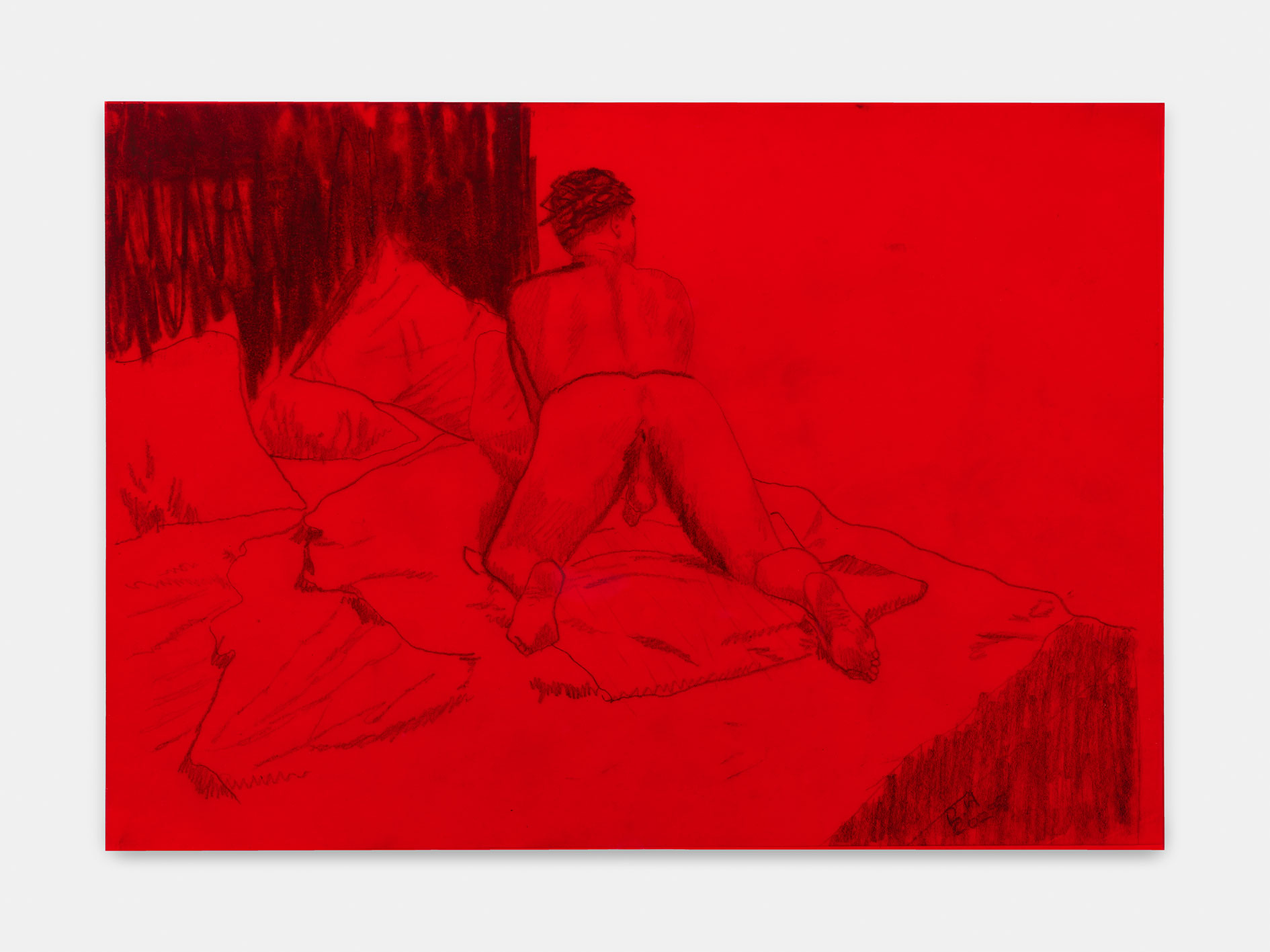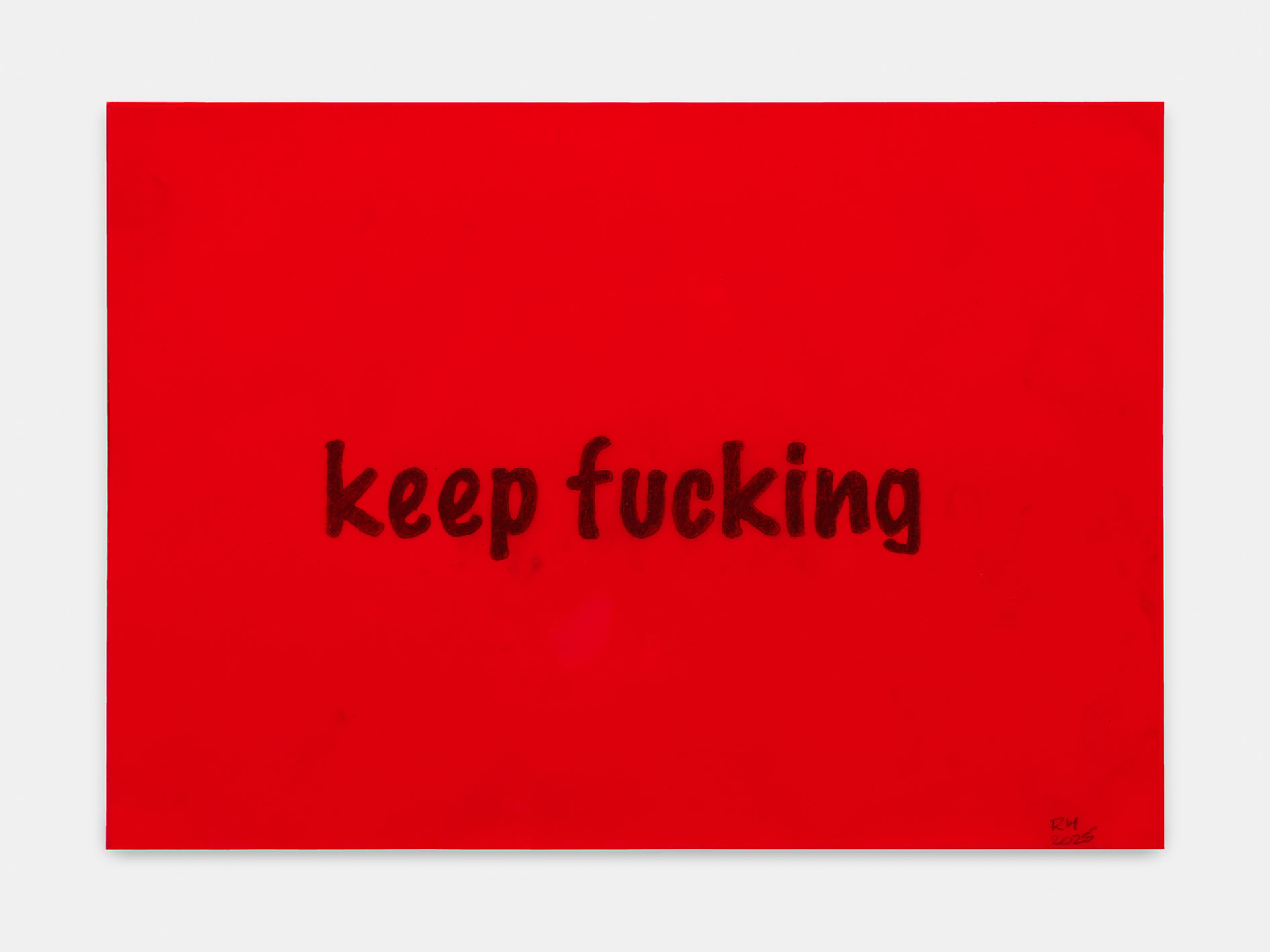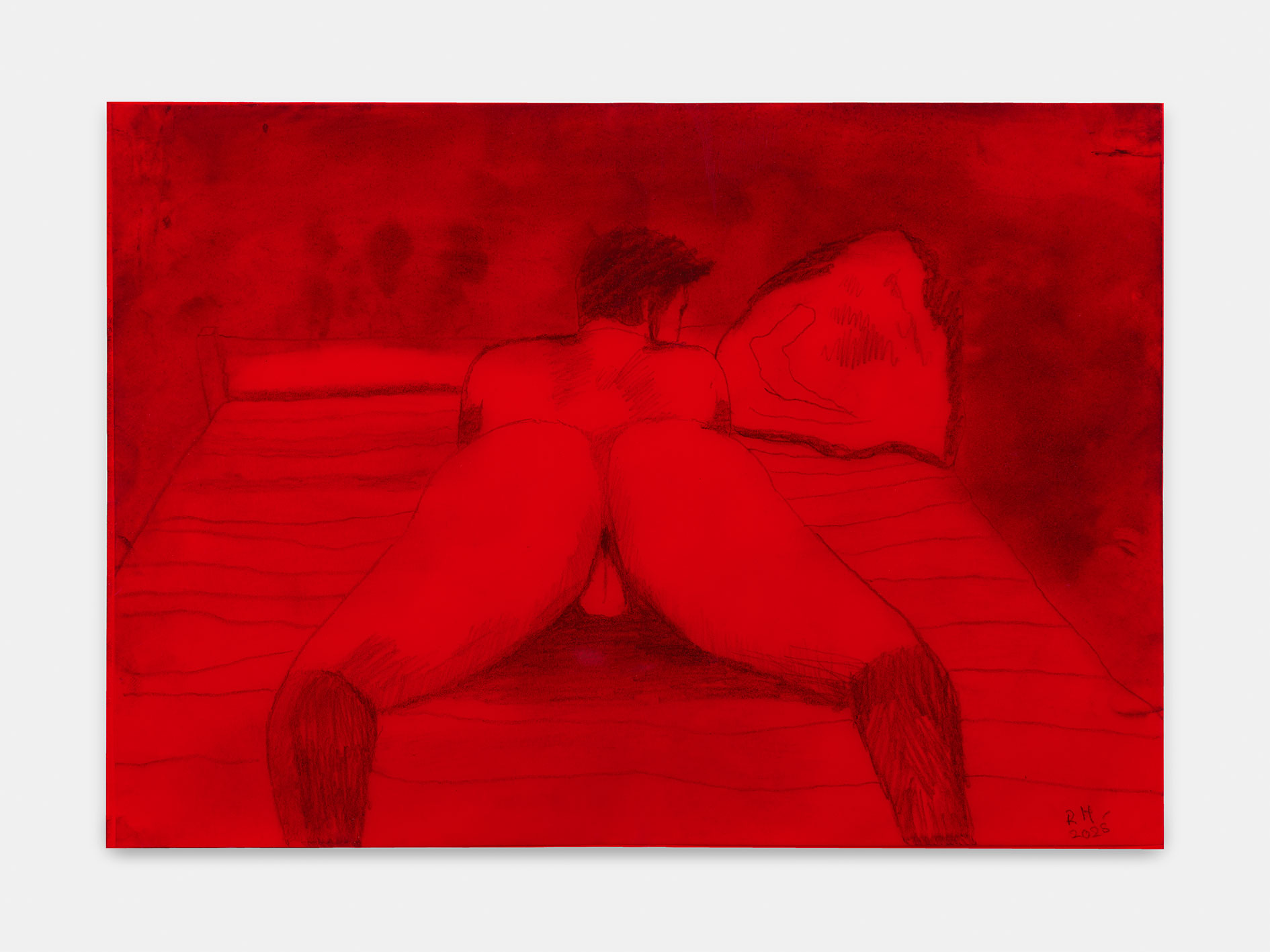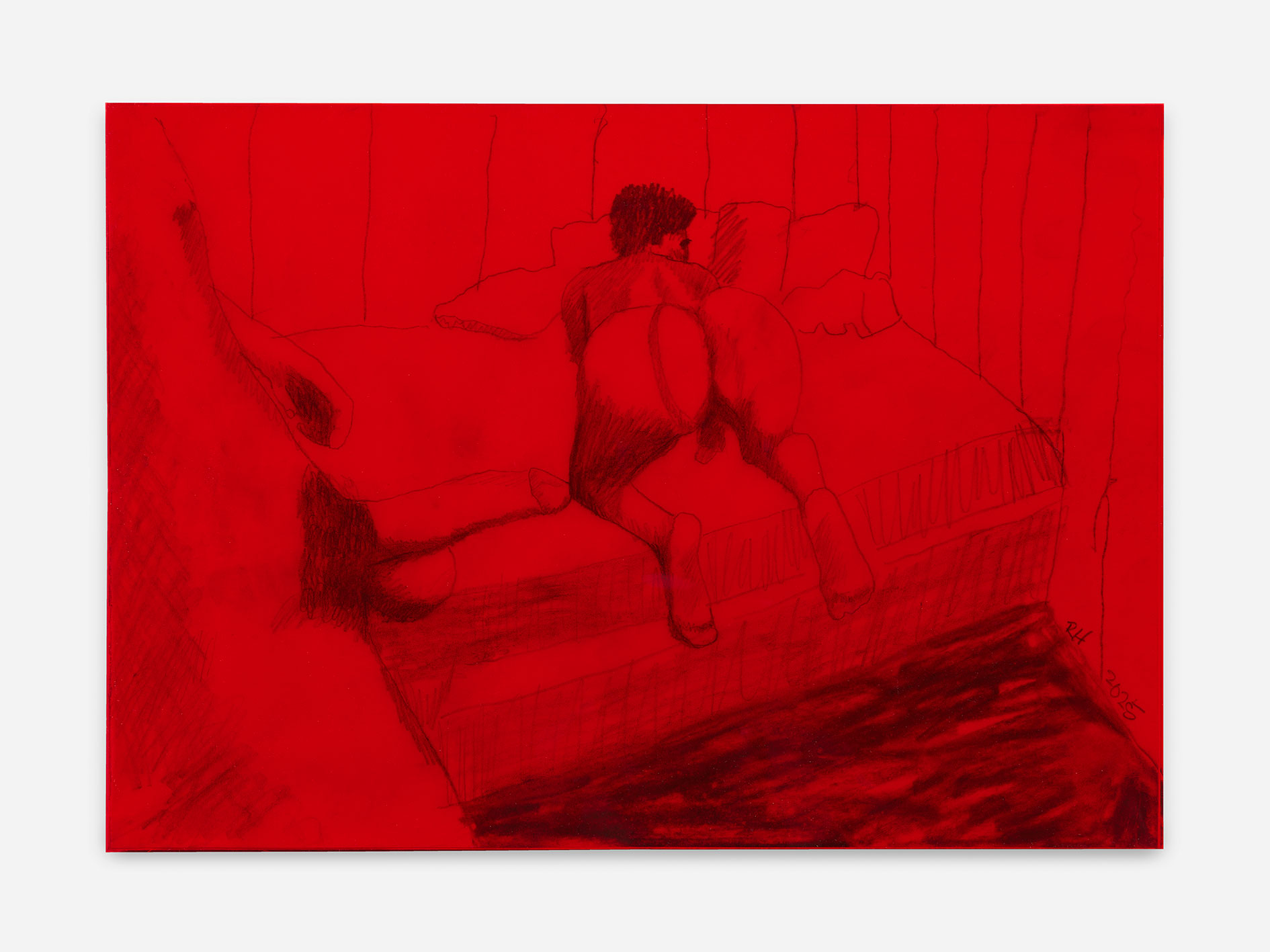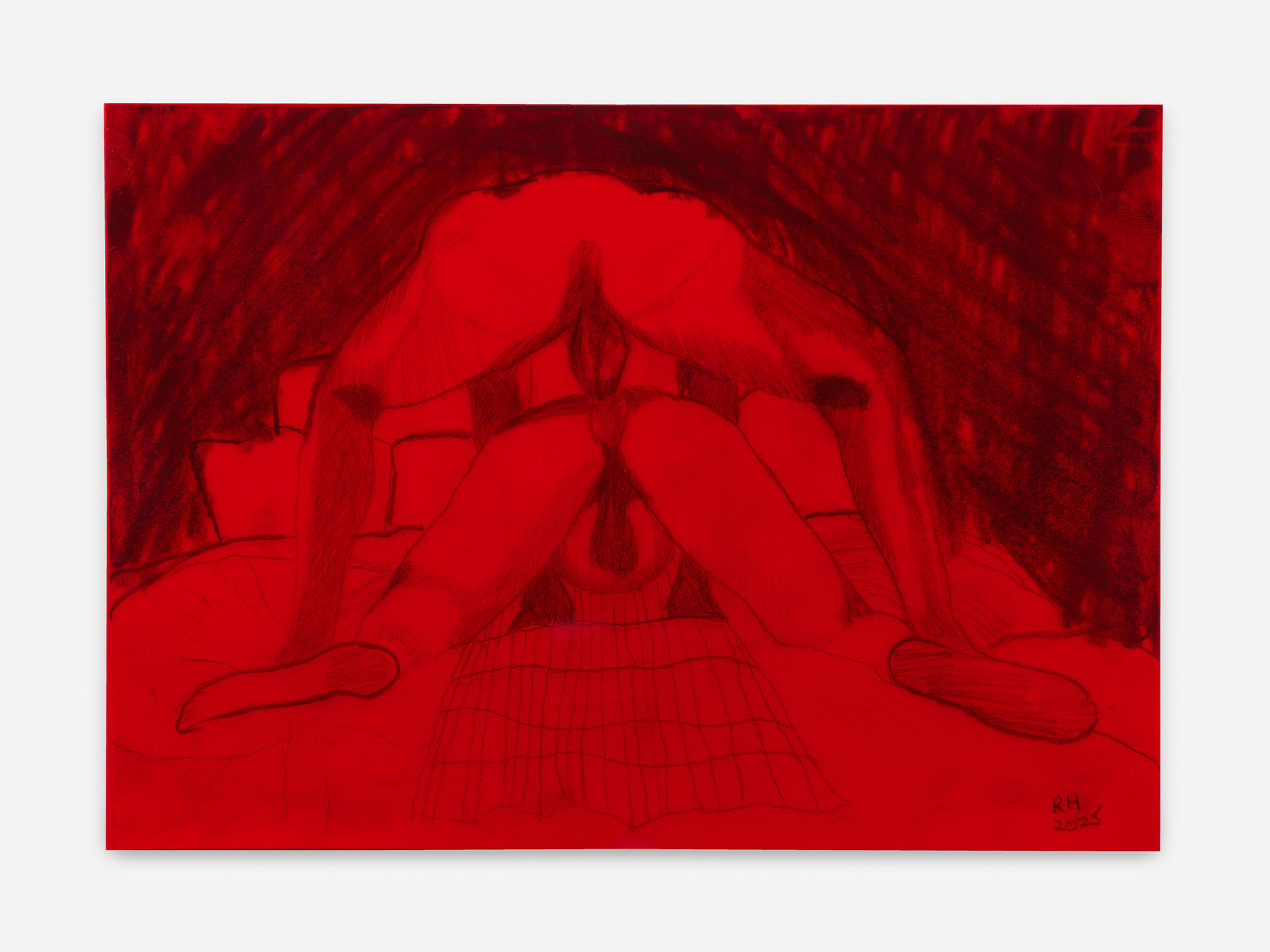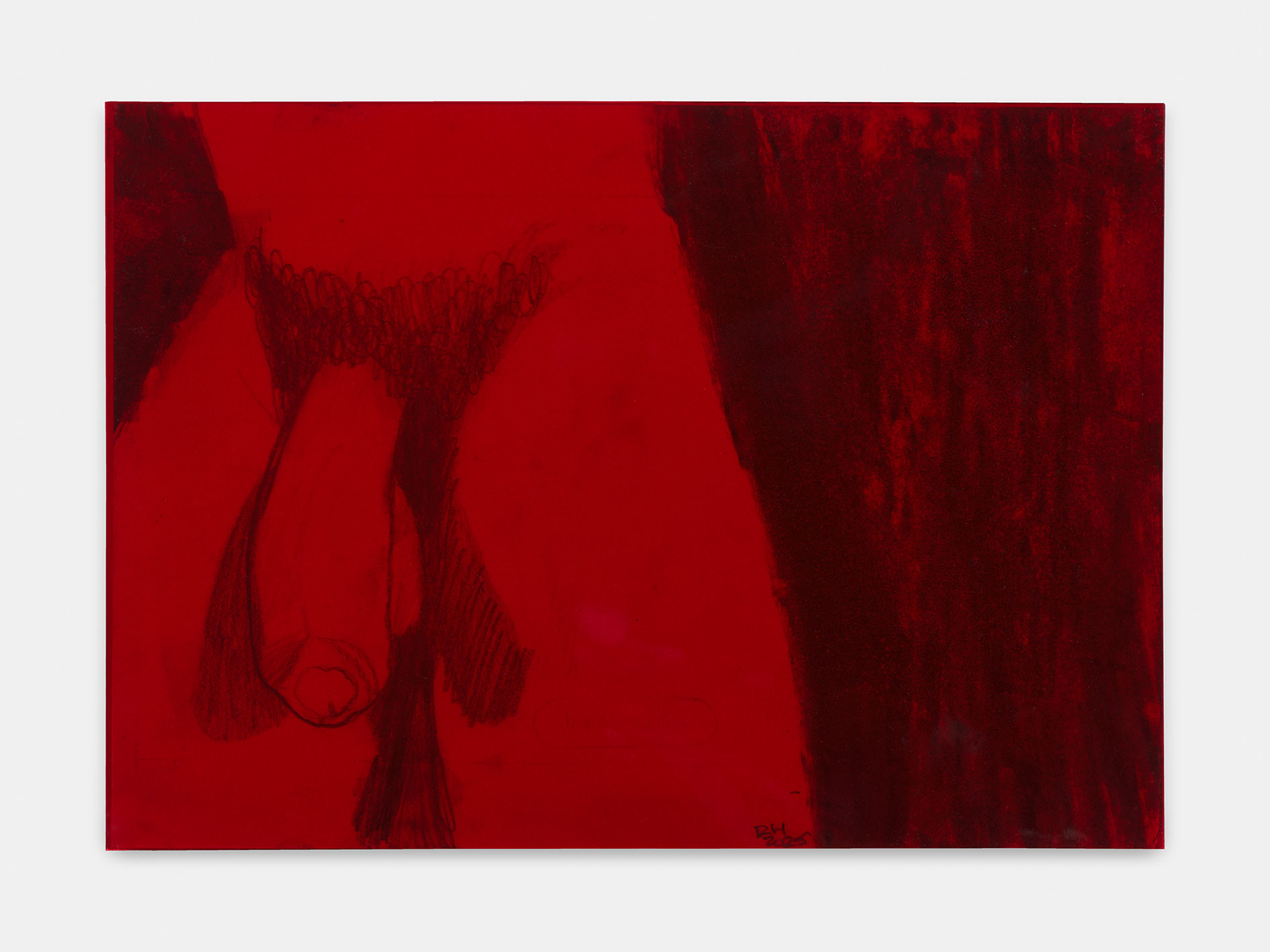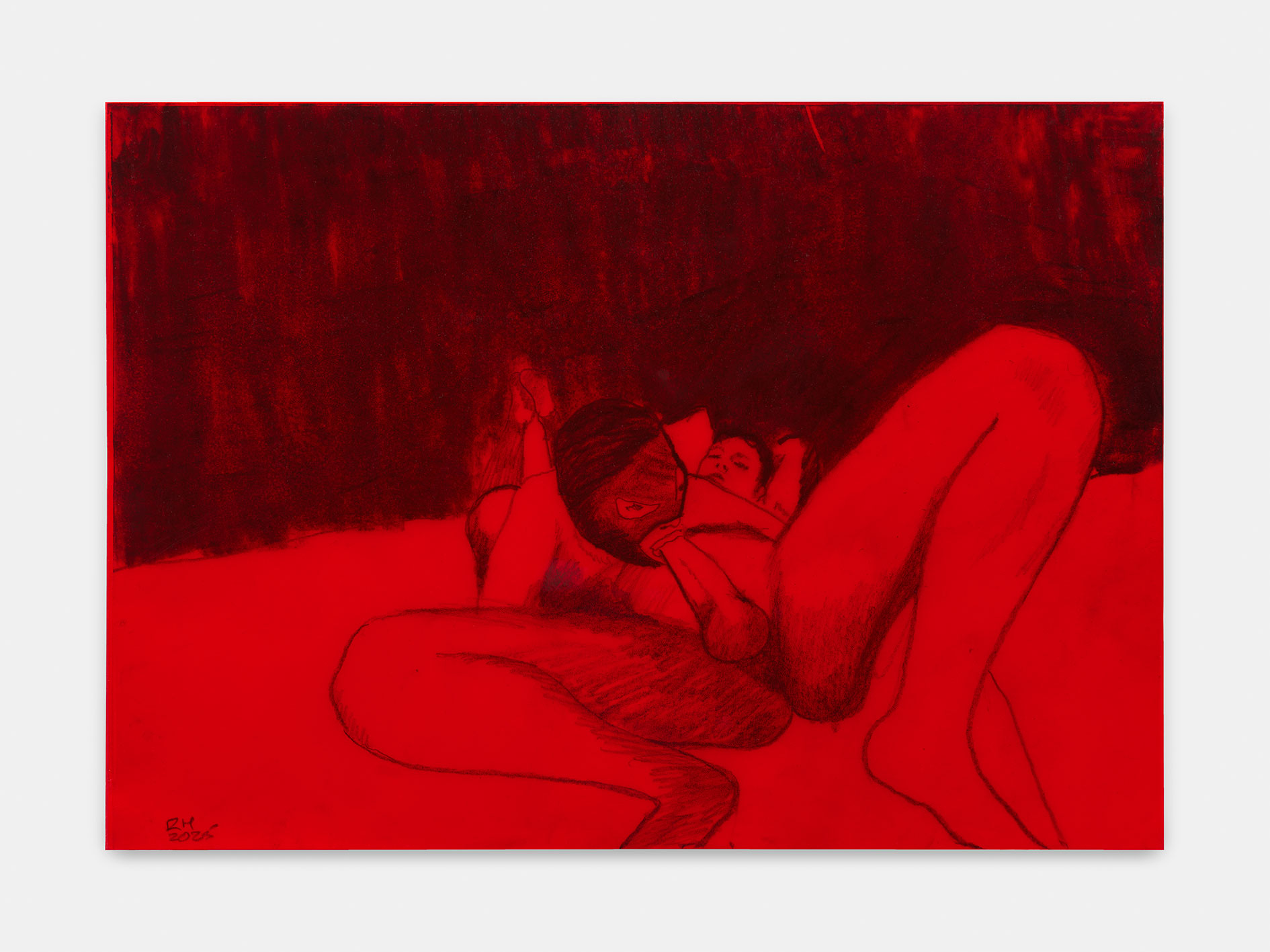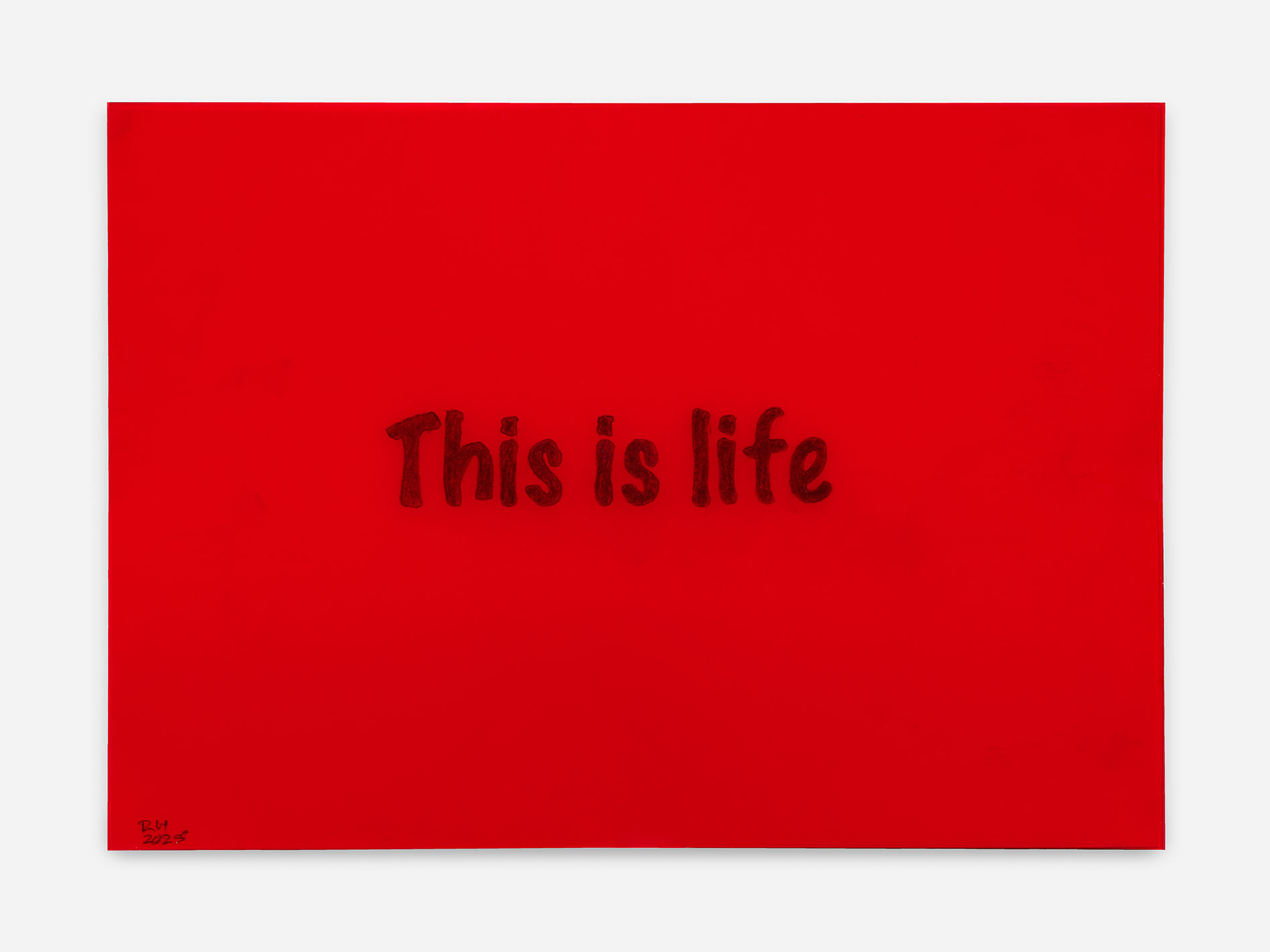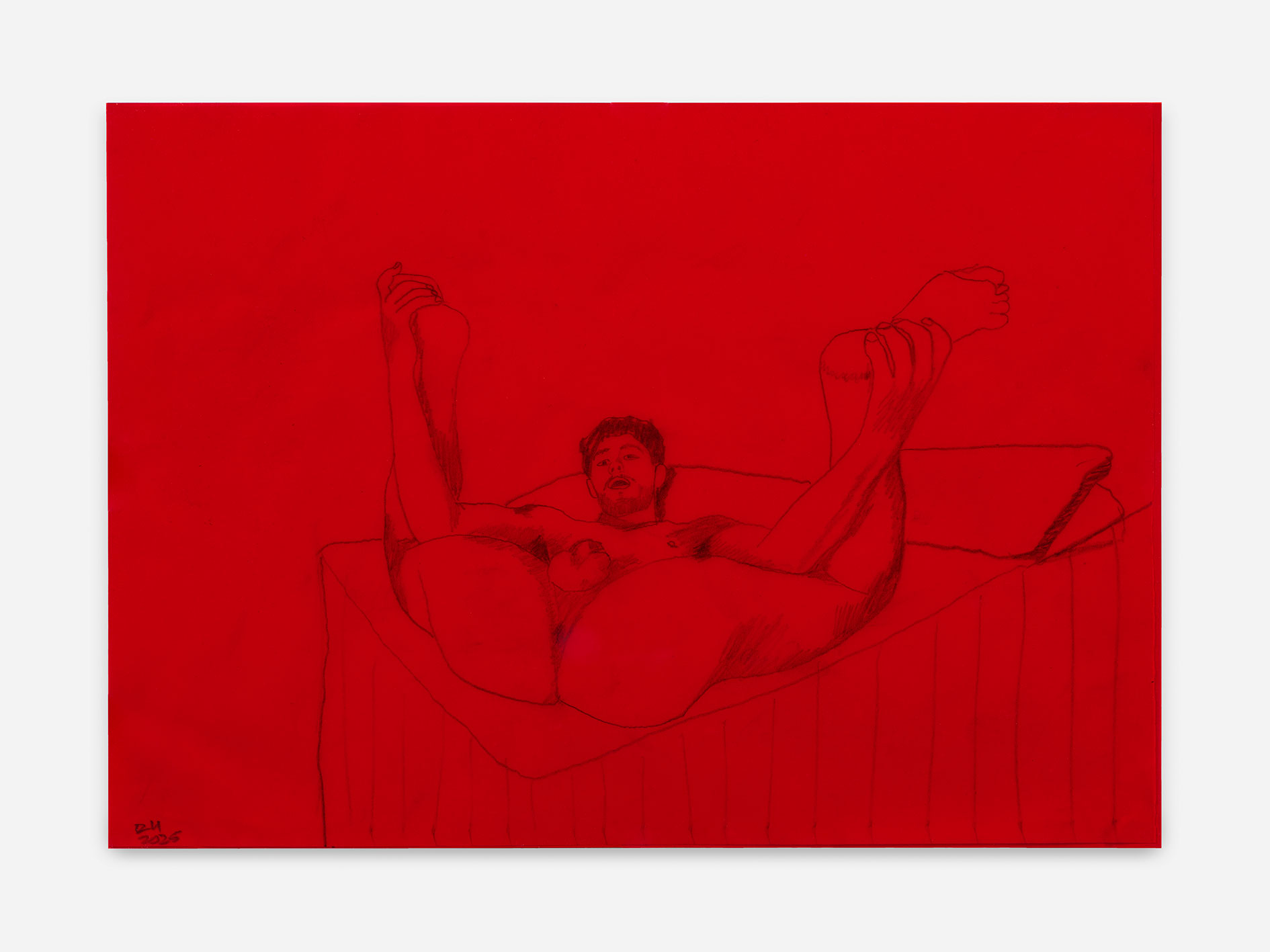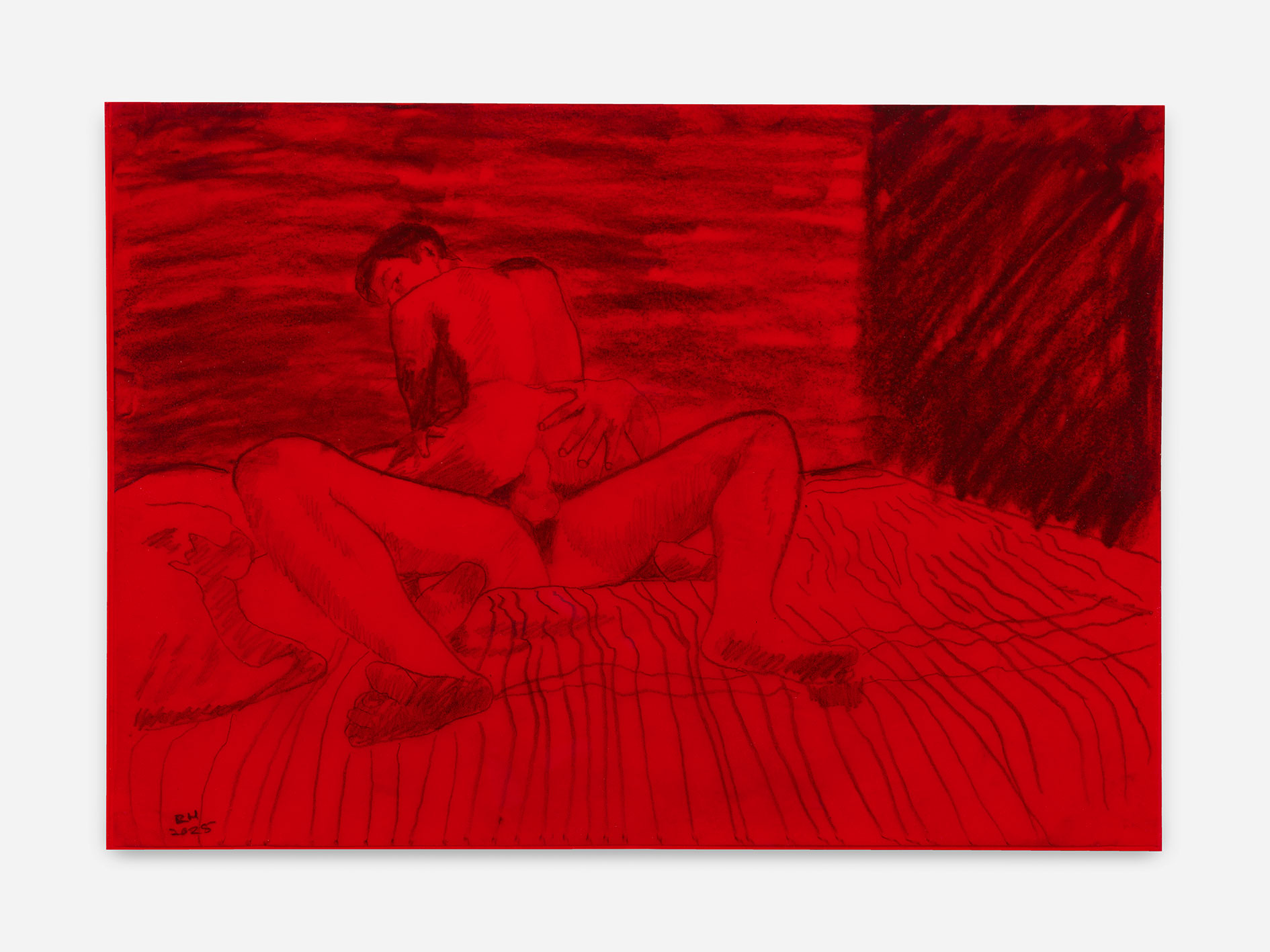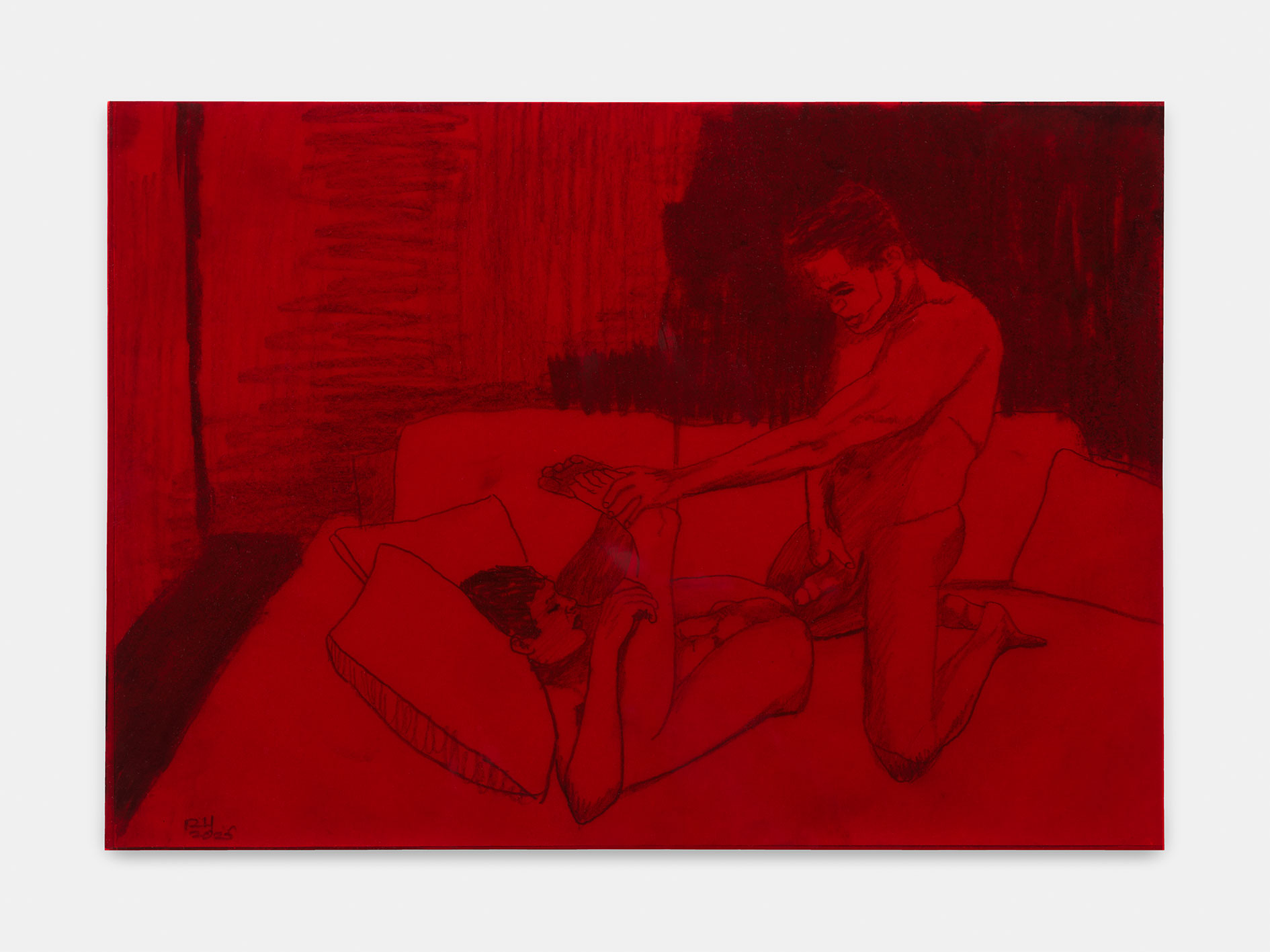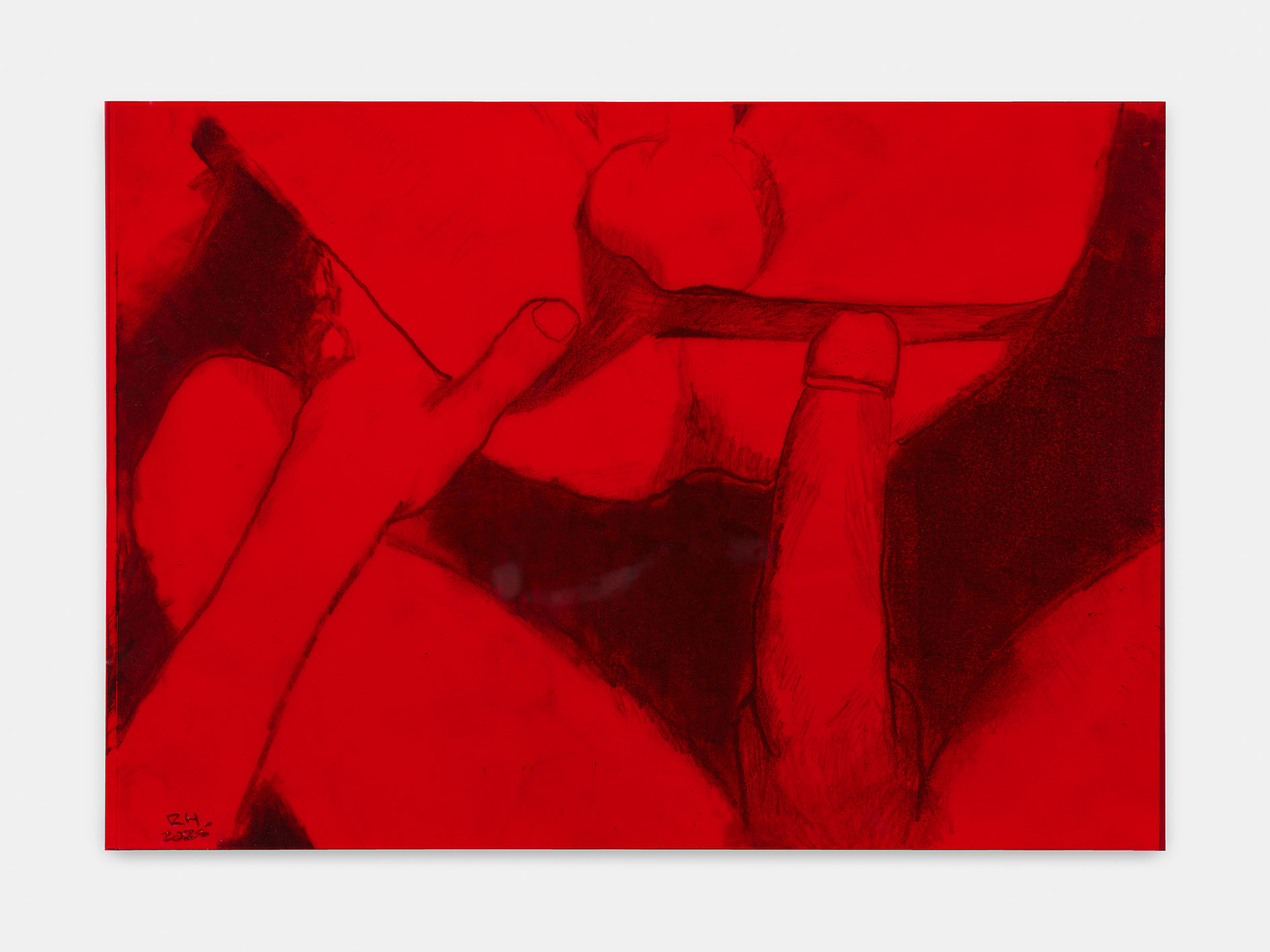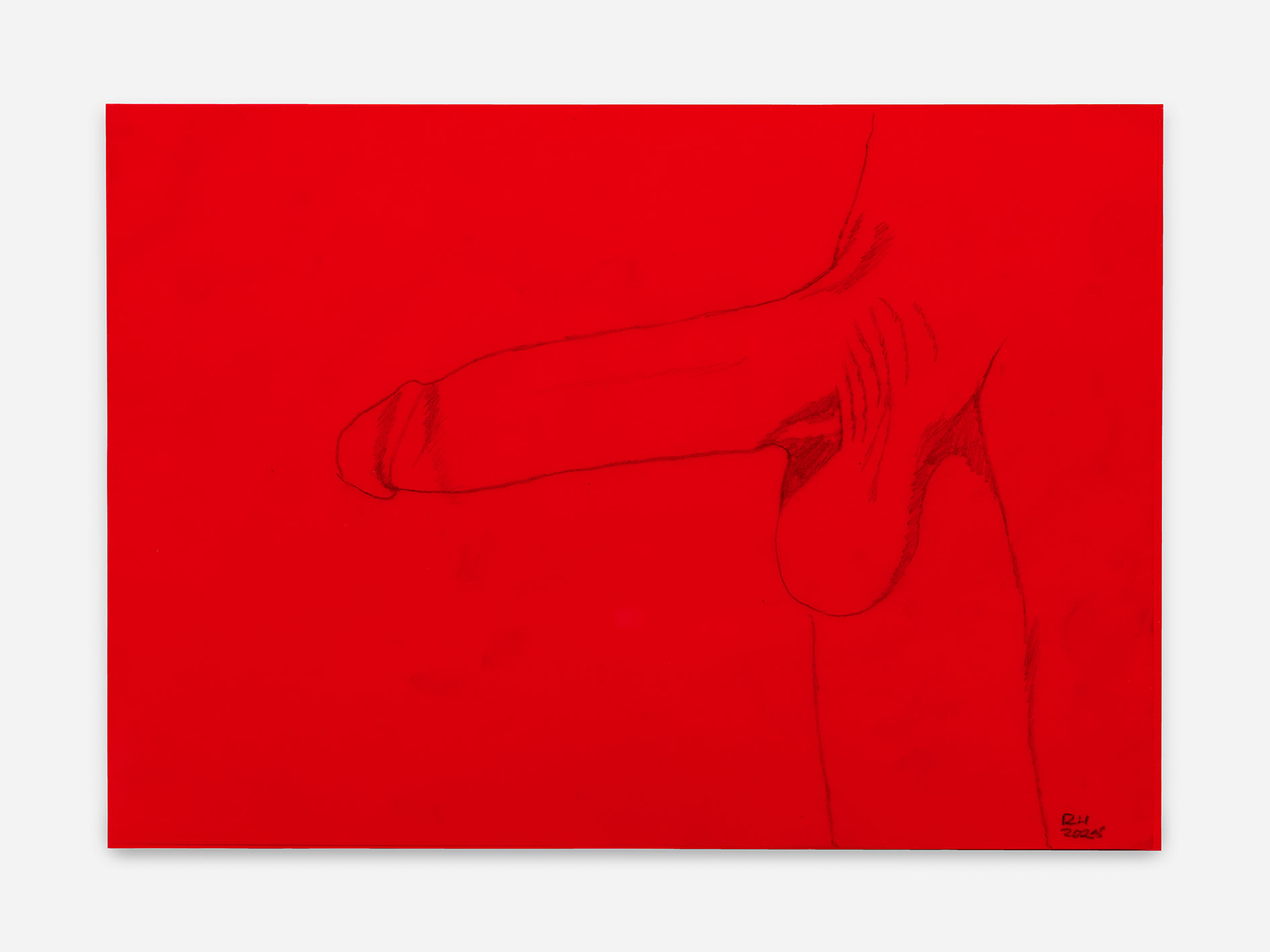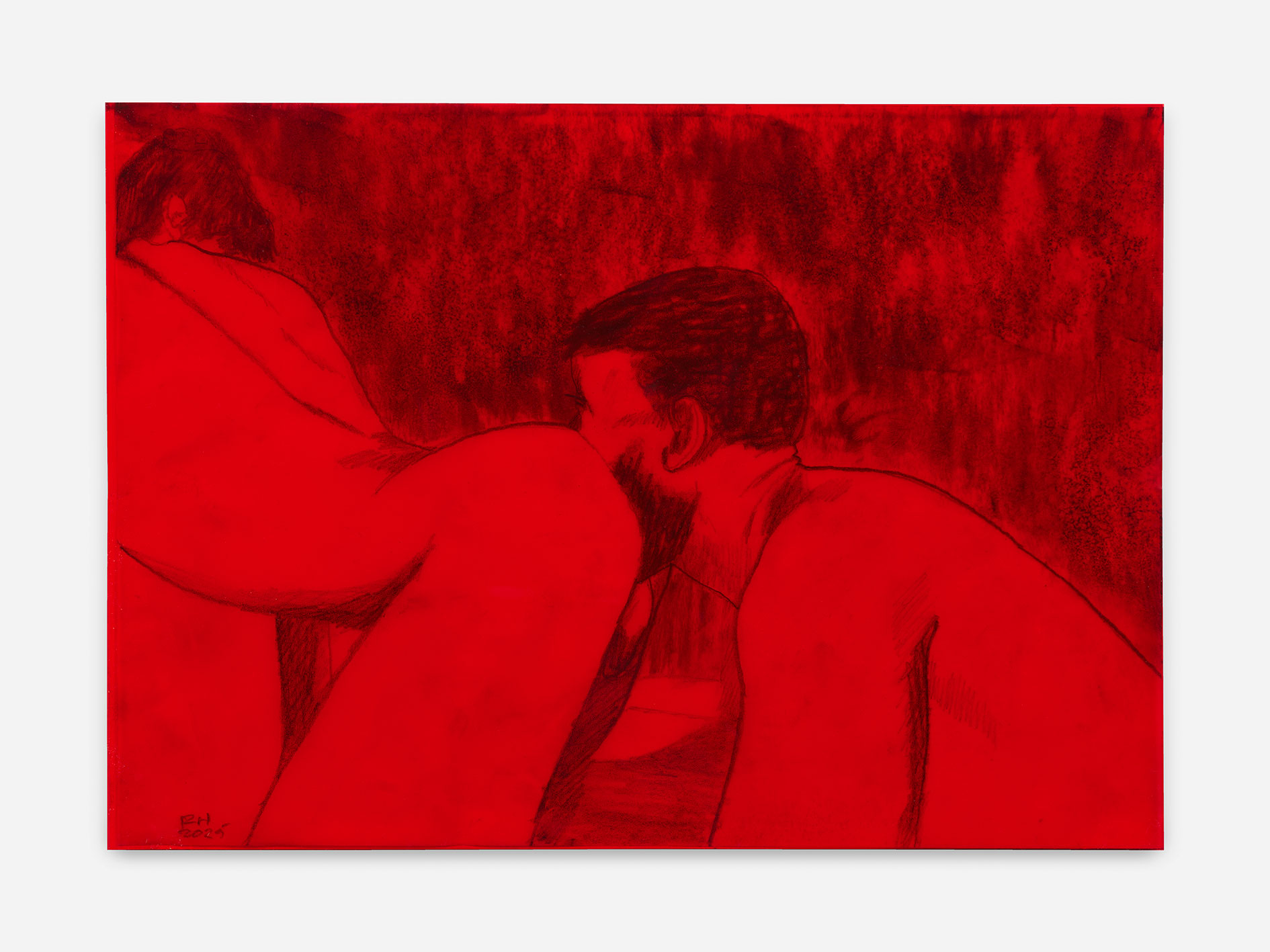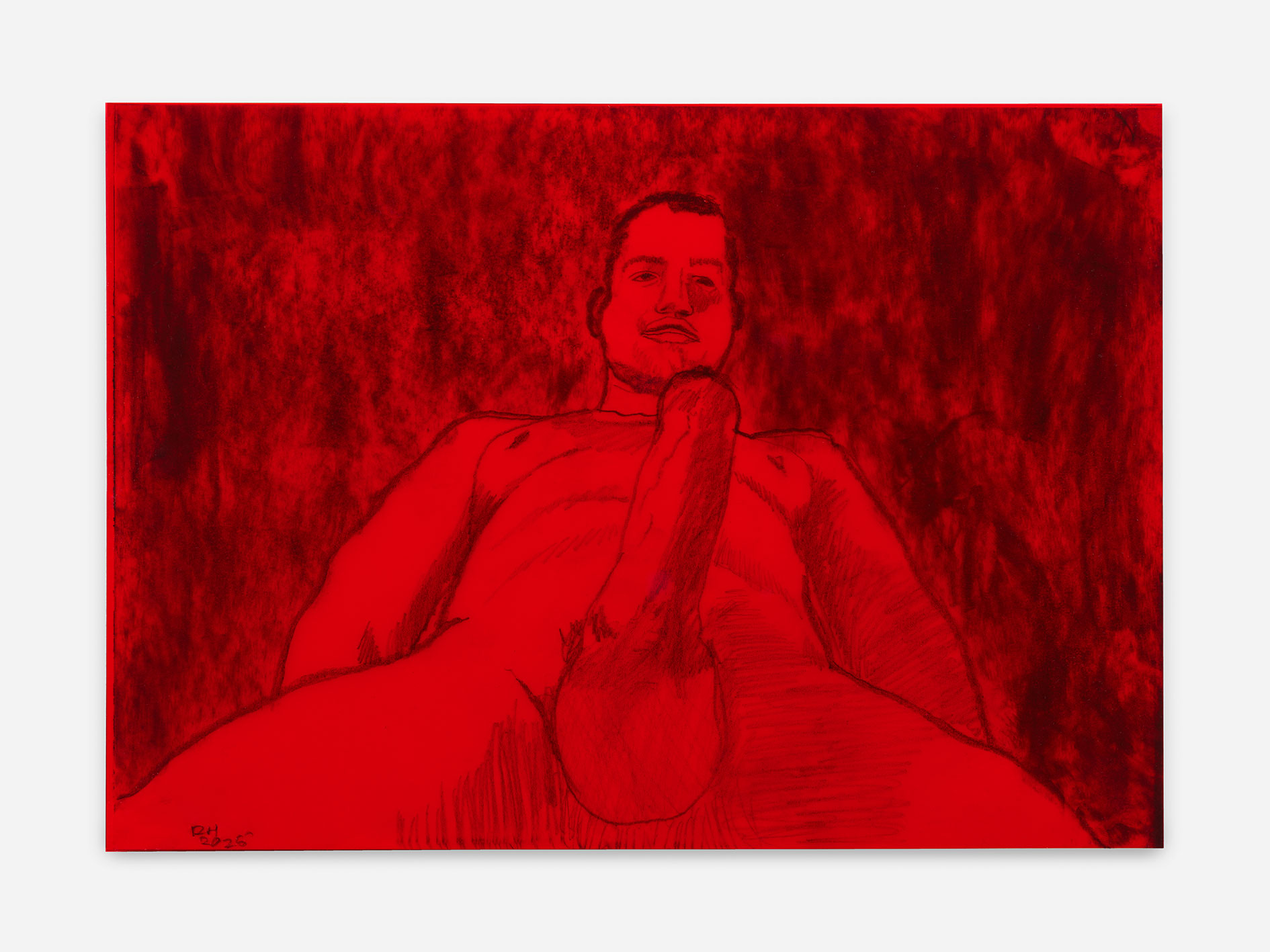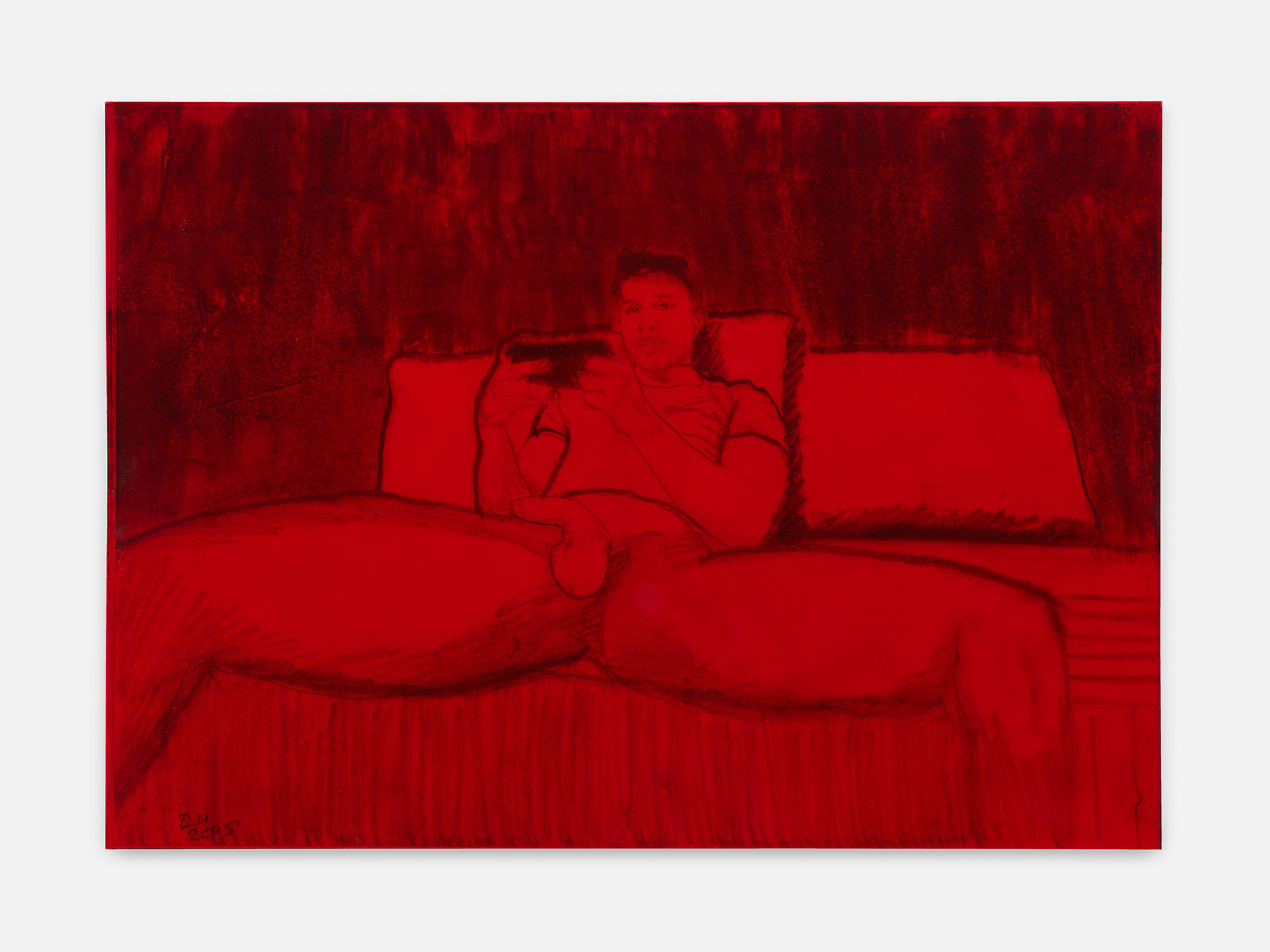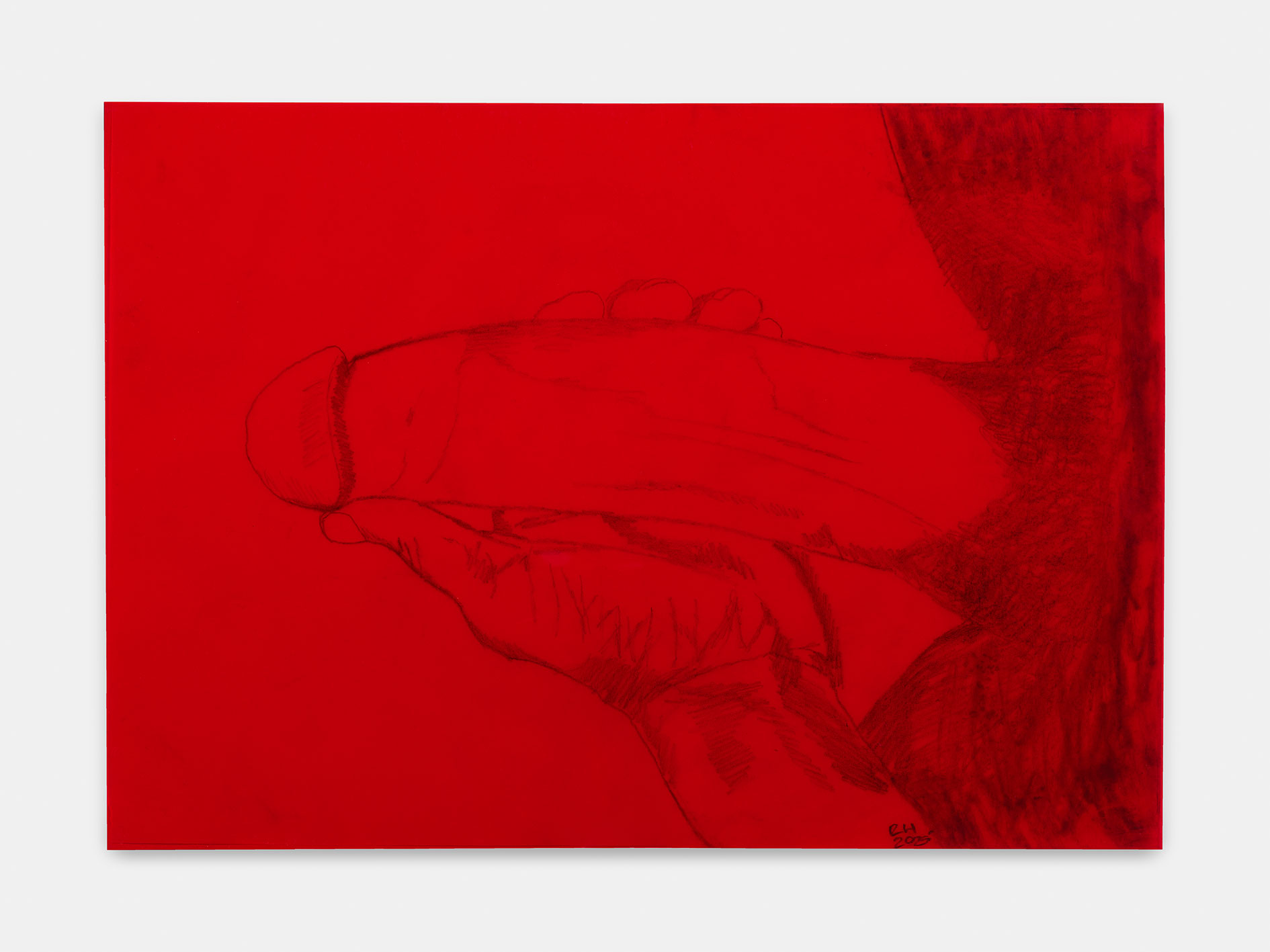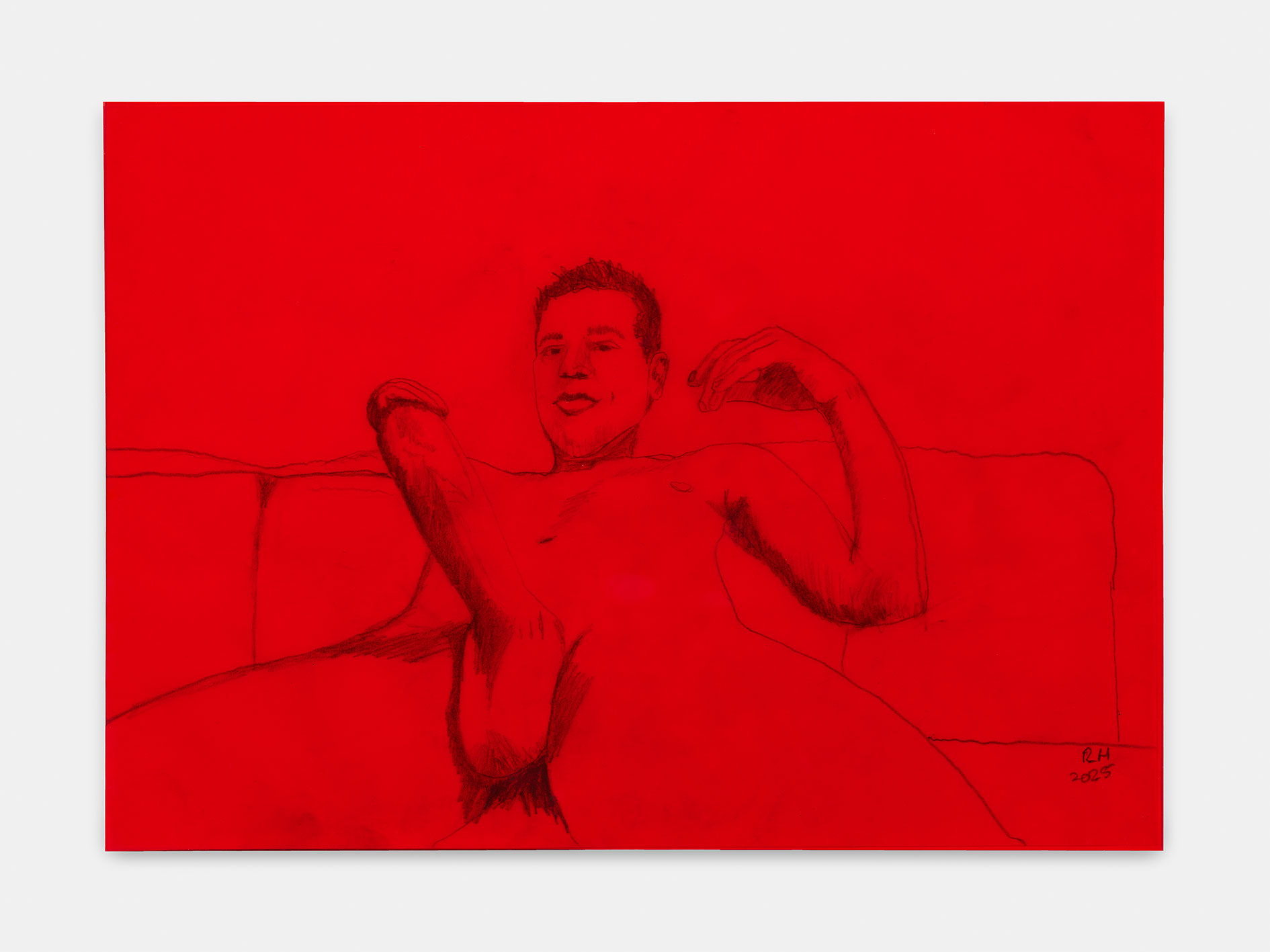Installation Views
Works
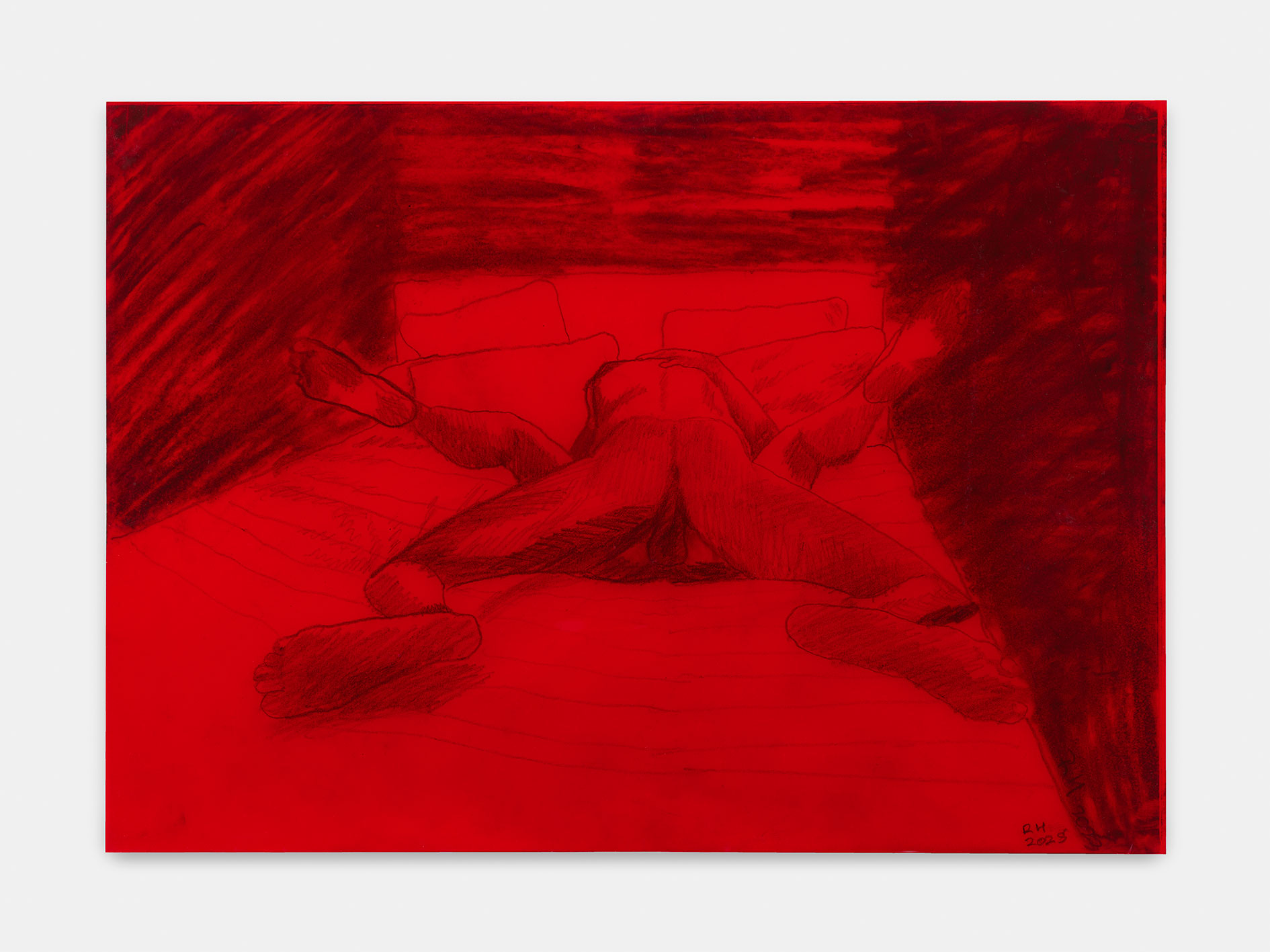
sebastian and friend in studio III, 2025, Pencil, charcoal on wax paper, red transparent foil, 21 cm x 29.7 cm
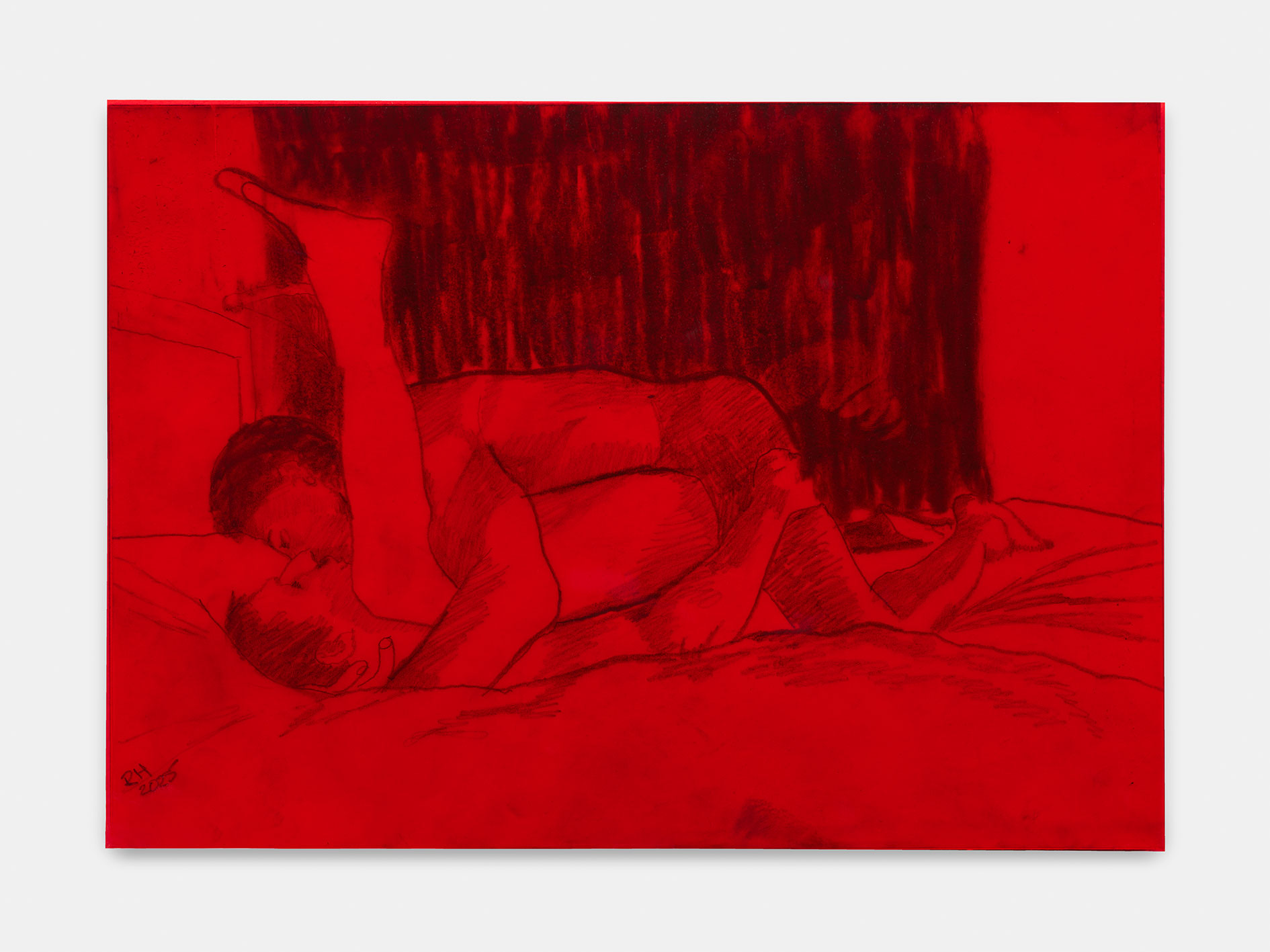
sebastian and friend in studio II, 2025, Pencil, charcoal on wax paper, red transparent foil, 21 cm x 29.7 cm
Press Release
An Archive in Flesh
Ajamu: „Would you have liked your younger self to be turned on by this work in the future?“
Ryan: „When I think of my younger self, my less explored self, which is referring to me
when I was back in Trinidad in my developing younger life, if I saw these images, I know for
a fact that I would have been instantly drawn to them, and it would have been a small
window into what sex looks like in a different place compared to what I was exposed to. […]
I didn‘t have access to community and imagery like this, or at least I haven‘t stumbled upon
it as yet.” ¹
When friends of post-punk musician Sean DeLear discovered a diary in his estate in 2017, which
he had kept as a 15-year-old in 1979, they found an intimate document of his queer coming of age:
growing up in a predominantly racist suburb of Los Angeles as the child of christian parents,
DeLear wrote almost daily about his everyday life between discrimination, first sexual experiences
and the exploration of queerness.² In the protected space of his diary, he reported on his crushes,
Village People concerts, first encounters with the local queer scene and shoplifting gay porn.
In a way, more than 40 years later, Ryan Huggins series Seeing Red forms a similar convolute of
auto-fictional documentation and archiving of sex and desire: Drawings that were initially created
on the basis of pornography stored on his computer or photos sent to Huggins on platforms such
as Grindr and Onlyfans and that ultimately — transferring the anonymity of virtually distributed
erotic images into the intimacy and directness of his own physical environment — led to nude
sessions in his studio. Huggins’ artistic gaze accompanies and documents the men he invites there
during sex; the explicitness of the depictions testifying the immediate proximity to his subjects.
Both the virtual and physical availability of gay sex in Huggins own life forms the decisive starting
point of his artistic practice, precisely because he does not take it for granted.
Ajamu: „What kind of archive do you think you’re developing through this work?”
Ryan: „I would like to think that, if would look back on it just as a person and as a viewer
[…] maybe in 15 years or 20 years, I’d immediately think of me as a younger man in a very
gay city, exploring sex that I didn’t know was available to a younger version of myself.
These drawings are a snapshot of my own exploration of sex in Berlin, out of all cities, of
what sex means and what sex looks like at my right now.“ ³
In contrast to DeLear’s literary notes, Ryan Huggins’ drawings aren’t adolescent explorations. They
capture and imagine the very pictorial worlds that were inaccessible to him in his teenage years. At
the same time they testify to the timelessness and infinity of the development and discovery of
one’s own sexual desire. Beyond stigma, taboo or social constraint, his body of work constitutes an
archive of sexual freedom; both reflecting his and his surroundings’ very own present as that of the
commonly defining internet age, in which pornographic material and footage of sex are constantly
available and accessible. And yet his approach radically opposes a purely impersonal and
superficial consumption of these imageries: Rather, Seeing Red functions, much like a diary, as a
safe space for the preservation of personal experiences. Primarily, of course, for the artists’ own
reflections and memories — but the immediacy of the intimacy Huggins captures in his drawings
ultimately includes everyone who truly beholds his images. Like a soft filter, the red foil covers the
pencil strokes seemingly protecting the privacy of those depicted in the same way as the dimmed
atmosphere of a darkroom or the warm light of an infrared lamp.
Ajamu: „I think this is a particular kind of a red. I see it as a photographic darkroom which
has red light. And your sex back room. I’d like to get a sense of what do you hope the
viewer slash voyeur will potentially feel when they engage with their read of the work, not
the content of the work.“
Ryan: „When I did the drawings, they were just basically done on simple wax paper type
material, and I played around with a red acetone foley that I had in the studio, and it went
over one of the drawings. And then instantly I felt as though there came a very similar
feeling towards the red and how I felt drawing the drawings. It’s somehow very much
almost like a rush or like a heat where one would be horny in some way, and that red
somewhat stuck throughout the overall vibe with the drawings and the encounters between
the people that I was drawing at the time.“ ⁴
Anna Marckwald
(The text essentially arised from a conversation between Ryan Huggins and his friend Ajamu Ikwe-Tyehimba,
a London based photographer and artist, that took place on February 20th 2025.)
¹ Ryan Huggins in conversation with Ajamu Ikwe-Tyehimba, 2025
² I Could Not Believe It: The 1979 Teenage Diaries of Sean DeLear (2023): Edited by Michael Bullock and
Cesar Padilla, Introduction by Brontez Purnell. Semiotext(e), South Pasadena
³ Ryan Huggins in conversation with Ajamu Ikwe-Tyehimba, 2025
⁴ Ryan Huggins in conversation with Ajamu Ikwe-Tyehimba, 2025
